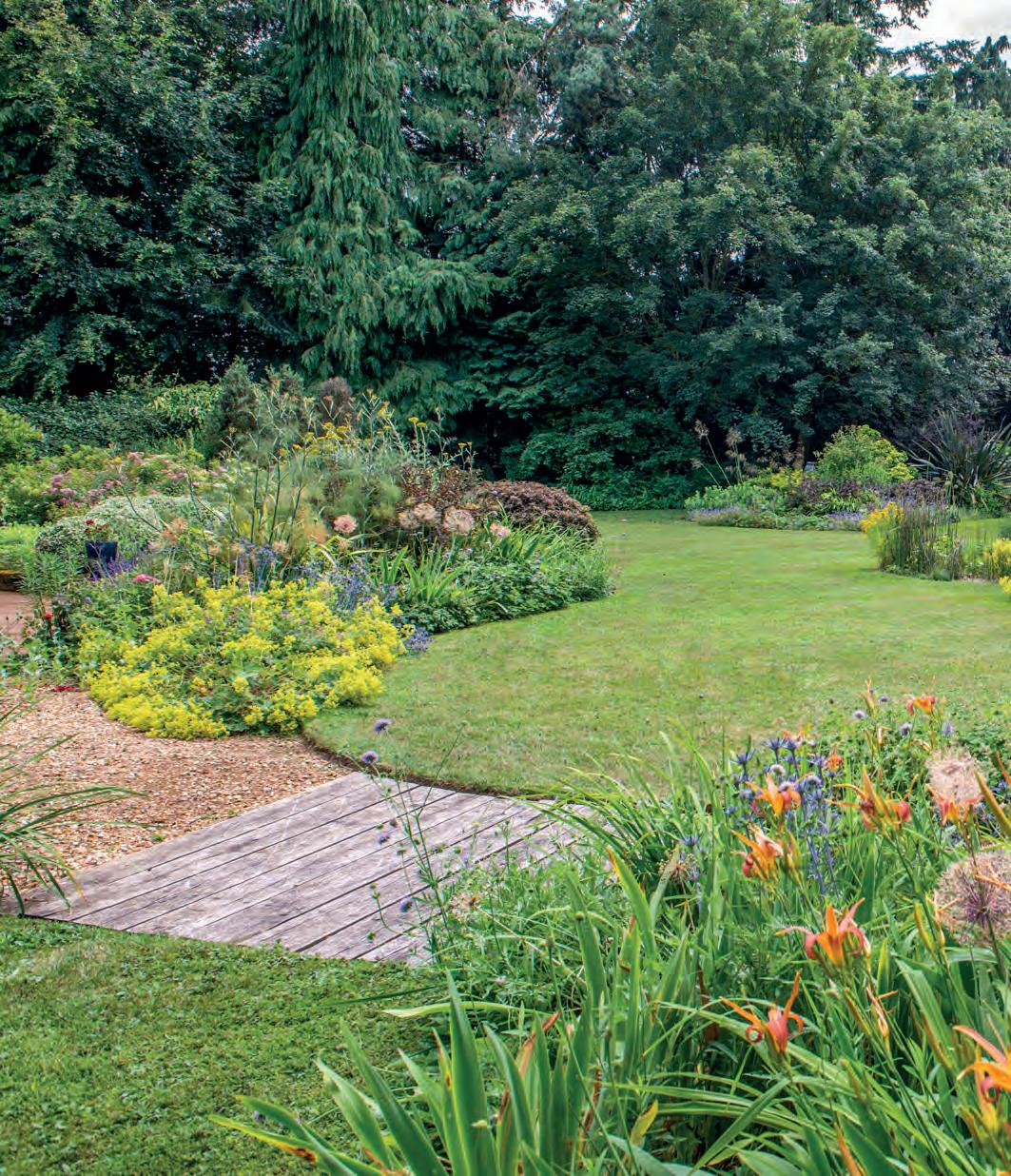



































One of the highlights in the Hampshire show calendar- the Romsey Show takes place at Broadlands on Saturday, 9th September. It is one of the largest one day shows in the south of England and a great day out. Open from 8am to 6pm with free parking the event welcomes a wide range or organisations and businesses with the emphasis of shopping. Vintage machinery, steam engines, the traditional display of livestock including heavy horses and live music and stunning floral displays. Discounted tickets now available from £17 for adults to £11 for children aged 12 to 17. https://romseyshow.ticketsrv.co.uk/tickets/ Broadlands Park, Romsey SO51 9ZE
With the mellow days of September, it’s a lovely time to visit some of the Dorset and Hampshire gardens opening for the National Garden Scheme during the month.
ARDHURST at Nash Lane, Marnhull, Sturminster Newton DT10 1JZ opens for the NGS on Sunday 3rd and Sunday 17th September from 1pm until 4.30pm each open day. The garden that’s been six years in the making, has plantsman’s content and borders in reconstruction, a large netted vegetable area, water harvesting, and all work in progress, with plants chosen for pollination and year-round interest. There’s parking in the field indicated. Admission £7, children free, with teas and wine available, wheelchair access and dogs allowed on short leads.
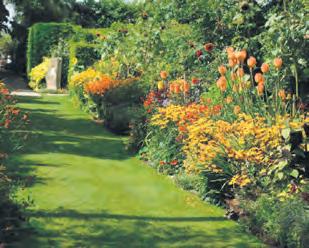
1 PINE WALK, Lyme Regis DT7 3LA opens for the NGS on Saturday 9th and Sunday 10th September, 11am-4pm each open day. It’s an unconventional ½ acre, a multi-level garden above Lyme Bay, adjoining the National Trust’s Ware Cliffs, abundantly planted with an exotic range of shrubs, cannas, gingers and magnificent ferns.. Admission £7.50, children free with homemade teas available. It also opens for the NGS to groups by arrangement with the owners; visit www.ngs.org.uk for more details.
HOLME FOR GARDENS is to be found at West Holme Farm, Wareham BH20 6AQ, which opens for the NGS on Tuesday 12th September, 9.30am5pm. The extensive formal and informal gardens have been strongly influenced by Hidcote Manor and The Laskett, with distinct rooms separated by hedges and taller planting.. Admission £6, children free, light refreshments in the Orchard Cafe, wheelchair access and dogs allowed on short leads. Coaches are welcome.
You can join former catering manager and chef Terry Lewis for an autumn guided walk identifying edible plants and herbs at Sir Harold Hillier Gardens on Wednesday, 13th September. It promises be a real eye opener to seasonal edible and medicinal plants which can be easily discovered. The tour lasts an hour as visitors explore the gardens off the beaten track followed by a cream tea in Jermyn’s House. You’ll also pick up some useful cooking and preserving tips. Take your walking boots! The price is £24 per person starting at 2pm.
Sir Harold Hillier Gardens, Jerymyns Lane, Romsey SO51 0QA

BUMPERS, at Sutton Common, Long Sutton, Hook RG29 1SJ, opening for the NGS on Saturday 2nd and Sunday 3rd September, 2pm-5pm, is a large country garden with beautiful views spread over two acres with mixed herbaceous and shrub borders laid out in a series of individual areas, with interesting sculptures and water features, informal paths and several places to sit and enjoy the views. Admission £5, children free, cream teas available, plants for sale and accessible for wheelchairs.
BLOUNCE HOUSE, at Blounce, South Warnborough, Hook RG29 1RX also opens for the NGS on Saturday 2nd and Sunday September, from 1pm until 4pm. This two-acre garden surrounding a classic Queen Anne house (not open) has mixed planting and herbaceous borders with a variety of colour themes, and an emphasis on dahlias, salvias and grasses in September. Admission £4, children free, homemade teas available, plants for sale, wheelchair access and this garden can also be visited for the NGS in September by arrangement with the owners. www.ngs.org.uk for more details.
REDENHAM PARK HOUSE Redenham Park, Andover SP11 9AQ has an elegant garden behind the Georgian house (not open), with a formal rose garden planted with white roses, steps leading up to the main herbaceous borders which peak in late summer, .. It opens for the NGS on Friday 22nd September, 2pm5pm, admission £6, for children £2.50, with home made teas available, plants for sale, picnics can be brought in, and coaches welcome. For other gardens opening for the NGS in September go to www.ngs.org.uk and follow the links.
The gardens of Forde Abbey will be the setting for an Autumn Plant & Gardening Fair on 3rd September from 10.30am to 3pm. The fair takes place at the perfect time of the year when the autumn colours are just taking hold. The Coffee Shop will be open throughout the day serving hot drinks, cakes and light bites from 10.30am until 4.30pm. The Gift Shop, Eeles Pottery will also be open along with the in house Plant Nursery from 10.30am to 5pm. There’s a reduced entry fee of £5 to the Plant & Gardening Fair, this includes admission to Forde Abbey’s award-winning 30-acre gardens.

Forde Abbey, Chard TA20 4LU
Gardeners throughout Dorset and Hampshire are being urged to get involved with a new September initiative to help the county’s failing hedgehog population. The hedgehog population in the UK has been declining since the early 2000s. Over a third of the UK’s population has been lost in both rural and urban environments. Hedgehogs are crucial to local ecosystems, and humans have a huge impact on their lives so it’s important we reduce our impact and help. Experts are encouraging the public to do more to help protect the remaining population. Every small action adds up – from encouraging wildflower growth which provides a vital food source to introducing wildlife corridors in their fences.
Dr Emily Lambert said: “Hedgehogs are the nation’s favourite garden visitor, but they really need our help. Happily, there are measures we can all take which would make a huge difference for hedgehogs and would ensure our gardens are a safe and welcoming paradise for hedgehogs and other mammals.
“Hedgehogs, as the name suggests, enjoy rustling through hedges, but the UK is facing a shortage of hedgerows! That’s not just the case in the countryside, as many people have opted to remove their hedges in gardens, in favour of fences and walls, which not only remove vital habitat and forage but also restrict movement of hedgehogs, which have a huge territory.
“Adding a Hedgehog Highway to your fence is a great way to help hogs get around without needing to cross busy roads. Adult hedgehogs can roam up to three km a night, so by introducing wildlife corridors you can help them search for food and shelter safely and with ease.
“Hedgehogs need to weigh around 600 grams or more to survive a cold winter, but when the weather is not in their favour, it can be hard for them to source enough to feast on before their slumber.”
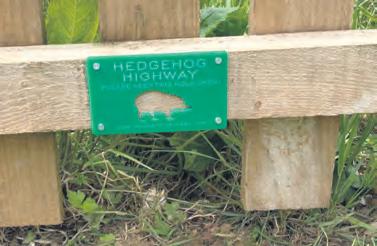
“And just like that Autumn overtook Summer with the softest kiss.” - Anon
“For it’s a long, long while from May to December / But the days grow short when you reach September”
- Maxwell Anderson
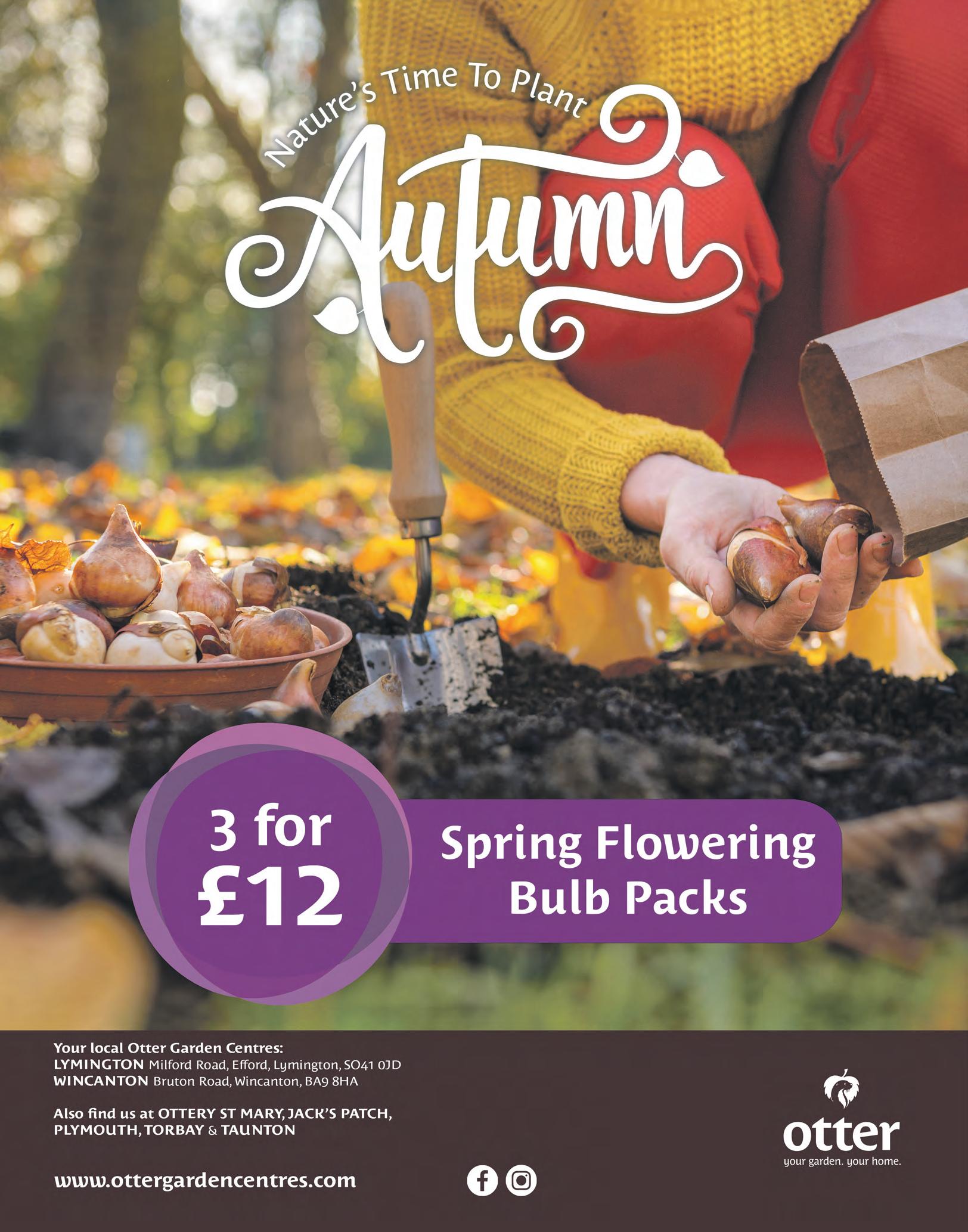
Hampshire Gardens Trust has an Open Gardens event to raise money for trust funds on Sunday,10th September from 2pm to 5pm. The event is a visit to Hambledon House, Hambledon.
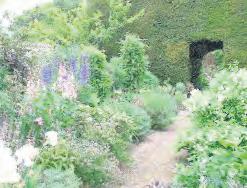
A garden of two and a half acres created by Diana and David Hart Dyke over 36 years has become an enchanting and peaceful oasis in the centre of historic Hambledon. Diana was for many years a member of the RHS Herbaceous Plant Trials Committee and Presenter of Channel 4’s All Gardens Great and Small, and her passion and extensive knowledge is reflected in a rich variety of unusual plants and planting combinations. In a largely informal garden, a huge elephant-shaped yew arch divides long double borders of shrubs and plants for all seasons spilling over brick paths. Elsewhere paths meander through interesting and attractive planting, lawns slope upwards behind the mellow brick and flint house and hidden corners reveal views of the church and distant village rooftops. In September the salvias among late perennials and grasses are seen at their best . Tickets are available to purchase in advance or on the door at £10. Tea and cake available (cash payment only). No dogs permitted. Email admin@hgt.org.uk
Grasses and their allies are a huge group of plants, offering a range of unique qualities that make them such versatile, practical, and yet easy care and beautiful additions to our gardens and designed spaces. Renowned for his expertise on grasses and their use in our designed spaces (and now in his 30th year at Knoll), there’s the chance to join Neil Lucas for an afternoon on Thursday, 7th September from 2pm to 4.30pm centred around a tour of the garden as he imparts something of his knowledge and experience and explains more about this fabulous group of plants. Learn how to choose, use and care for them, and see just how valuable grasses can be for today’s gardens and the wider environment. The cost is £45. RHS members £36.
This is the first of two stand-alone classes, the second class being held on Thursday 21st September.
If your gardening club or association is getting back into full swing after the restrictions of the past couple of years be sure to let Country Gardener know. Send your club meetings and outings details to timeoff@countrygardener.co.uk
26TH/27TH
Poole Flower Show
Details on 01202 752014 www.pgsgreenfingers.co.uk
29TH
West Parley Gardening Club
‘THE HISTORY & DEVELOPMENT OF DAFFODILS’ - GWYNNE DAVIES
Details on 01202 896711
SEPTEMBER

1ST
Shaston Gardening Association MONTHLY MEETING www.shastongardeningassociation. weebly.com
Plant Heritage Dorset is organising an Autumn Plant Fair in the grounds of Abbotsbury Subtropical Gardens on Sunday, 10th September from 10.30am to 3pm. There will be the chance to see any specialist nurseries and growers, selection of garden, craft and wildlife stalls with the added benefit of quality refreshments and food. Entry to the fair includes free access to gardens.

Abbotsbury Subtropical Gardens, Buller’s Way, Abbotsbury, Nr Weymouth DT3 4LA
The rare Chaenomeles speciosa ‘Contorta’ – an ornamental quince – has been crowned the winner of Plant Heritage’s Threatened Plant of the Year 2023 competition. To Plant Heritage’s knowledge, the winning plant is thought to be only one of five of its kind still known to exist in the UK, and is also only one of two surviving Chaenomeles cultivars in the UK to have twisting branches and larger, more open flowers. It was announced as victorious at RHS Hampton Court Palace Garden Festival and belongs to National Collection Holder David Ford, who has cared for it since 2020. Plant Heritage has also announced the winner of the competition’s People’s Choice award (as nominated by visitors to the world-renowned show and online), a pretty in pink Rhododendron ‘The Dowager’. Cared for by the team at Leonardslee Lakes and Gardens in Sussex, this plant is from the recently accredited National Plant Collection of Rhododendron.
4TH
Ferndown & District Horticultural Association
‘BHUTAN’ - ROSEMARY LEGRAND
Details on 07790 089889
5TH
Medstead Gardeners Club
‘FORAGING FOR WILD FOOD’ - CHARLOTTE FYFE www.medsteadgardenersclub.xyz
6TH
Dorchester & District Gardening Club
‘GEORGE BERNARD SHAW’ - SUSAN VINCENT
Details on 01305 268523
7TH
Beaulieu Horticultural Society
SOCIAL MEETING
Details on 01590 611451
8TH
Blackmore Vale Bonsai Group
MONTHLY MEETING
Details on 07837 781744
9TH
Warsash Horticultural Society WARSASH VILLAGE SHOW www.warsashhorticulturalsociety. chessck.co.uk
Wimborne Gardening Club AUTUMN SHOW www.wimbornegardeningclub.co.uk
Details on 01202 880116
11TH
West Moors Horticultural Society
‘FUNGI AT YOUR DOORSTEP’ - ERIC WATSON
Details on 01202 871536
12TH
The Radipole & Southill Horticultural Society
‘MAKE A BUTTERFLY GARDEN’MARTIN YOUNG
Details on 01305 788939
Woodlands Gardening Club
‘NATIONAL CLEMATIS VITICELLA COLLECTION’ - DEBBIE GREEN
13TH
Totton & District Gardeners’ Society
‘WOODLAND BIRDS OF THE NEW FOREST’ - MARCUS WARD
Details on 023 80292761
14TH
The Petersfield Gardeners Club MONTHLY MEETING www.petersfieldgardenersclub.com
16TH
Parkstone Gardeners Society CHARITY FLOWER SHOW
1pm - 4pm
Details on 01202 752014
19TH
Parkstone Gardeners Society
‘LIFE OF A HOTEL CHEF’ - PAUL BRETT
Details on 01202 752014
20TH
Milford Gardeners’ Club
‘WILDLIFE IN COMMON: MARTIN DOWN & NEW FOREST COMMONS’ www.milfordgardenersclub.co.uk
22ND
Hordle Gardening Club
‘PLANT HUNTING IN THE HIMALAYAS’ - TOM CLARKE www.hordlegardeningclub.co.uk
26TH
West Parley Gardening Club
‘FUCHSIAS MY WAY’ - DEREK DEXTER
Details on 01202 896711
27TH
Sturminster Newton Garden Club
‘SHOWING AND GROWING
DAFFODILS’ - GWYNNE DAVIES
Details on 01258 471147
Uplyme & Lyme Regis Horticultural Society
‘BULBS THAT CREATE SPARKLE’MICKY LITTLE
Details on 07773 604137
Warsash Horticultural Society
‘AUTUMN ASPIRATIONS - LOOKING FORWARD TO SPRING’ - PAUL PATTON
www.warsashhorticulturalsociety. chessck.co.uk
Bulbs are a vital element in any garden – they provide swathes of brilliant colour not only in spring but across the seasons. Some of our favourite garden plants grow from bulbs, from welcome snowdrops and crocuses in late winter, daffodils and tulips in spring, lilies, gladioli and dahlias in summer and nerines and colchicums in autumn. When to plant bulbs depends on when they flower – as a general rule plant spring-flowering bulbs in autumn and summer-flowering bulbs in spring.
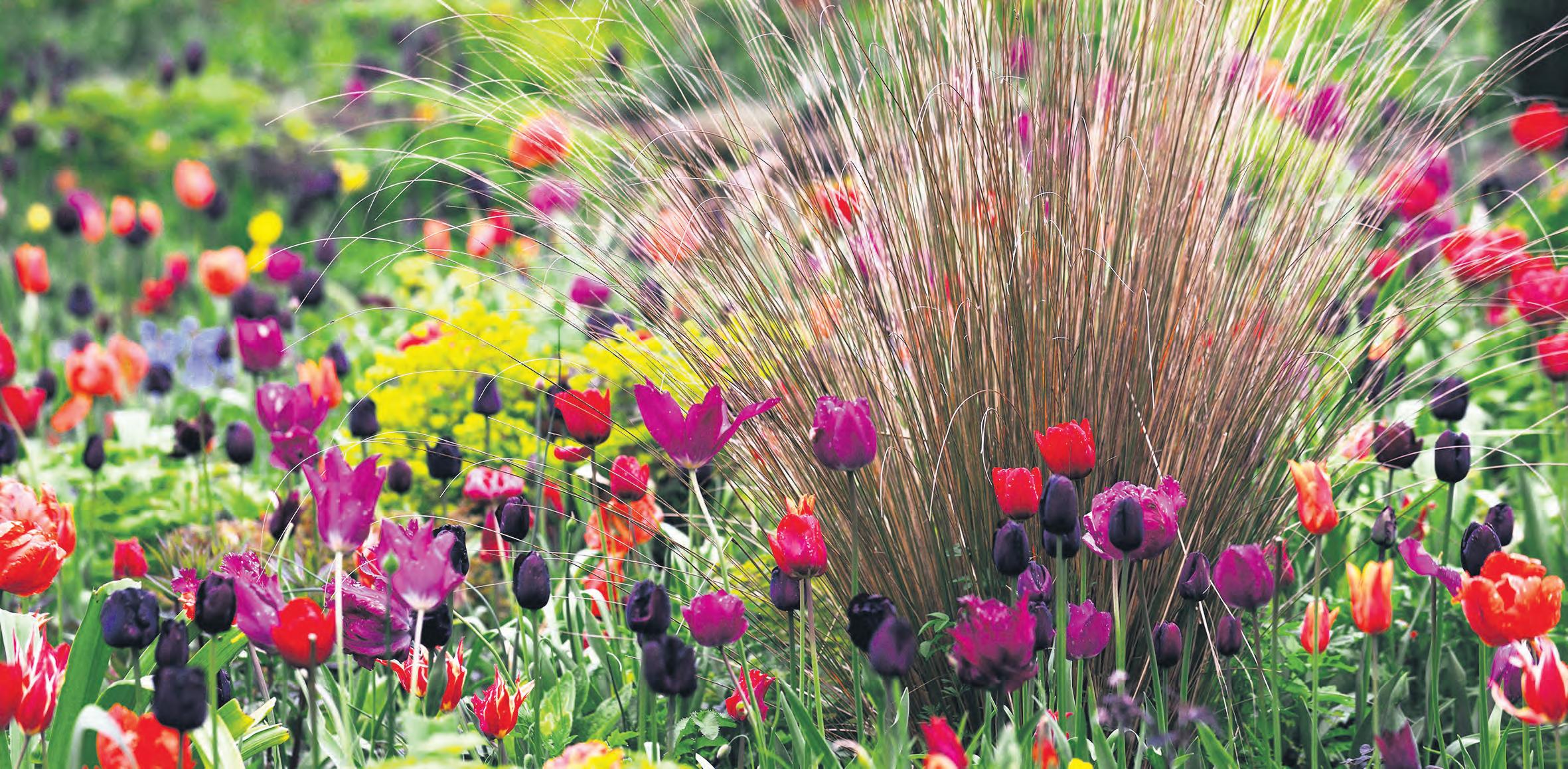
Planted when dormant, bulbs are small powerhouses that burst into flower a few months later, giving a stunning display of flowers. The term 'bulb' often refers not only to true bulbs such as such as daffodils and tulips, but also tubers, corms and rhizomes.
Bulbs are relatively inexpensive, come in a range of beautiful varieties, and are super versatile: you can grow them in beds and borders, containers, window boxes, and even hanging baskets.
Autumn is the perfect time to learn how to plant tulips, daffodils, and all the other springtime favourites, and perhaps some more unusual types, too.
It's crucial to get bulbs planted before the ground freezes, so it's a good idea to start planning as soon as you can. Most spring-flowering bulbs should be planted six to eight weeks before the soil begins to get too cold. The ideal planting time is late September.
You should not plant bulbs whilst the soil temperature is still too warm, as by doing so you effectively end up ‘cooking’ your bulbs. The temperature of the soil will impact on the flowering performance of the product, leading to at best deformities in the flower, and at worst the flower not growing at all.
This method applies to spring-, summer- and autumnflowering bulbs: Dig a hole wide and deep enough for your bulbs. Plant most bulbs at two to three times their depth. For example, for a bulb measuring five centimetres high, dig a hole 10-15cm deep and sit the bulb in the bottom of it. If planted too shallow, new growth will become exposed too soon, leaving it more vulnerable to damage by cold temperatures. Shallow planted bulbs are also vulnerable to being dug up by squirrels who will feast on their nutritious food stores.
Bulbs may be planted in individual holes, one for each bulb, or trenches for many bulbs.
Place the bulbs in the holes/trench, making sure the growing point is pointing upwards. Do not push bulbs down hard as this may damage them.
With some varieties the growing tip is not always obvious, in which case planting them on their side will ensure the shoot heads for the surface, no matter what end it is. Simply cover with soil carefully and firm down gently once backfilling is complete.
Bulbs are brilliant for brightening up a patio or deck in a spring container. And it's easy to plant them.
Use multi-purpose compost and add a little horticultural grit to improve drainage.
For a full display, pack in as many bulbs as you can fit. Avoid allowing them to touch, though – instead, space them around a bulb's width apart.
If you're opting for a mix of varieties, plant a bulb ‘lasagne' by putting the biggest bulbs at the bottom and the smallest ones on top, layering them up with soil in between.
Once you've finished planting your bulbs, water them once and then regularly when they're in active growth. Be careful not to overdo it though, which can lead the bulbs to rot.
Planting spring bulbs in lawns is a great way of brightening up large areas of grass or difficult-to-plant areas such as steep banks.
Choose naturalizing bulbs such as snowdrops, many types of daffodils, Scilla siberica, Fritillaria meleagris (snakes' head fritillaries) or Crocus tomasinianus that will multiply naturally on their own, increasing in number year after year.
To create a natural look, scatter the bulbs on the grass to be planted where they fall.
Use a bulb planter for large bulbs such as narcissus or tulips. Small bulbs can be planted in holes made by a garden fork or sharp stick.
Remove the turf plug and carefully insert the bulb. Use the soil from the plug to gently firm in and replace the turf plug on top.
• Spring flower bulbs are planted between September and November, depending on the variety.

• Summer bulbs such as agapanthus, cannas and alliums should be planted in spring, when the soil is beginning to warm up. They’ll require a minimum temperature of 13°C before they’ll start to grow. Avoid planting in cold, wet soils, otherwise they are likely to rot.
• Plant bulbs as soon as possible after purchase.
Nerines Daffodil Crocus
Hyacinth Lilies Allium
Tulip Crocosmia Iris
Ranunculus Tree lily Anemone
Fritillaria Muscari
AUTUMN FLOWERING BULBS (TO PLANT IN SPRING)
Gladioli Begonia Bluebell Ponerorchis
PLANTING BULBS FOR SPRING IS A GREAT WAY TO PLAN FOR A COLOURFUL GARDEN NEXT YEAR. AND IT'S SO EASY TO DO, EVEN THE MOST INEXPERIENCED OF GARDENERS CAN GET INVOLVED.










September is the perfect time to collect seeds from a wide variety of plants, vegetables and flowers you grow in your garden. They are widely available, free and allow you to create your own plant dynasty

1. Know what to grow
Open pollinated varieties, are like dog breeds; they will retain their distinct characteristics as long as they are mated with an individual of the same breed. This means, with a little care and planning, the seeds you produce will be true-to-type, keeping their distinct traits generation after generation if they do not cross-pollinate with other varieties of the same species.
extra space between varieties. For others, more advanced methods can be used, including larger isolation distances, pollination barriers, or hand pollination.
3. Know when your seeds are mature
Saving seed involves three steps: selecting seeds from the most suitable plants, harvesting them at the right time and storing them properly.
Seed-saving is easy. You’ll get better seed than you can buy, you can keep your own varieties going for future years and rather wonderfully you can start a whole new dynasty of plants.
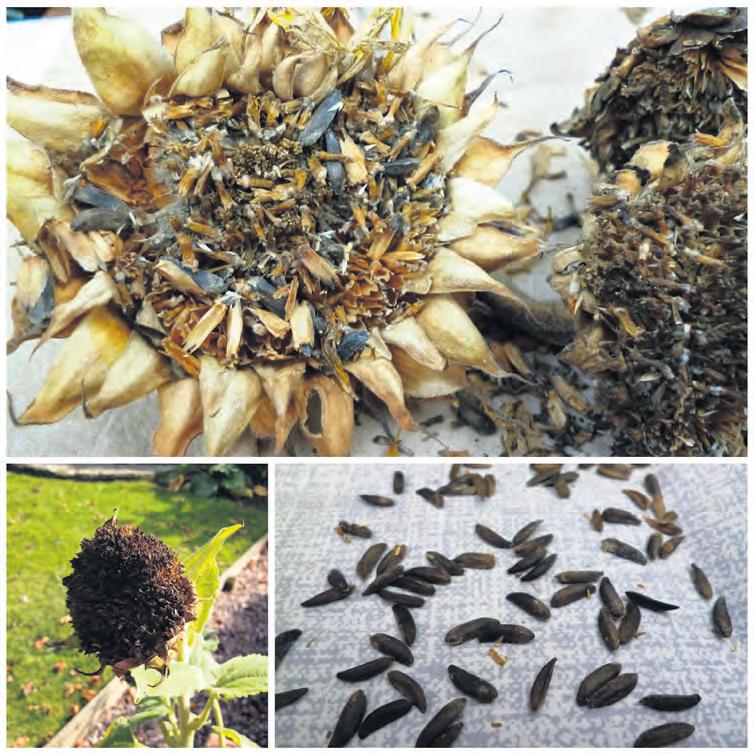
In the gardening world there are few things that are more rewarding than starting a dynasty of new plants.
Growing plants from seeds is one of the most basic and fulfilling of all the things we do in the garden. When we collect our own seed, clean it, dry it, store it, we are taking part in an endeavour that stretches back for thousands of years. It is of course all to do with the cycle of life. It’s exciting to sow from brightly coloured seed packed which adorn the shelves of garden centres but it is far more satisfying to collect your own seeds and start a new dynasty of plants.
September is a time of abundance in the garden with lots to harvest.
This is also the key time when many of your plants are running out of steam and setting seeds. This isn’t such a bad thing as your plants are providing you with the seeds for next year’s crop. Heirloom crops wouldn’t exist if it weren’t for gardeners and farmers who carefully grew and saved seeds for thousands of years.
The skill is knowing when the seeds are fully mature and ready for harvest.
It takes trial and error to learn and perfect this skill. So, don’t be afraid to experiment and try different things. And remember it’s all for free.
Not all plants flower, set seed, and die in a single growing season. Those that do, like lettuce, tomatoes, and peppers, are annuals. Biennials, such as carrots and onions, don’t flower until their second growing season, after they have gone through a cold period. Some long lived plants, like apple trees and asparagus, are perennial, surviving and flowering for many years.
2. Start with easy crops
Some crops like peas, beans, lettuce, and tomatoes are great for beginning seed savers. These annual, self pollinating crops require little to no isolation, and only a few plants are needed to reliably produce seeds.
Grow enough plants.
Some crops have a hard time producing seeds when too few plants are around. Others can reproduce with just a single plant. If the population size of a seed crop is too small, some genetic diversity may be lost and over many generations; in time this can result in a noticeable decrease in plant stature, overall vigor, germination, and yield.
Put a little space between varieties.
In order to produce seeds that are true-to-type, a little garden intervention is needed to prevent unwanted cross pollination between different varieties of the same species. For some crops like lettuce and peas, all that is needed is a little
For crops that produce wet fruits, the seeds are not always mature when the fruits are ready to eat. Eggplant, cucumber, and summer squash fruit are eaten when the fruits are immature and still edible, but before the seeds are mature. This means that seed savers need to leave a few fruits to fully mature in the garden when they want to save seeds. Dry fruited crops, like grains, lettuce, and beans, can be removed from the plant once seeds are dry and hard.
Garden crops can be classified as either dry fruited or wet fruited. Collecting seeds from dry fruited crops, can be as simple as going out to the garden, handpicking a few mature seedpods, and bringing them into the house for further drying and cleaning. Fruits from wet fruited crops must be picked when their seeds are mature. The harvested fruits are either crushed or cut open, and the seeds are extracted from the flesh and pulp before the seeds are dried.
4. Store seeds
Seeds are happiest when they are stored in a cool, dark, and dry place. A dark cupboard in a cooler part of the house or a dry, cool basement are both good spaces to store seeds for a year or two. Once properly dried, seeds can also be sealed in airtight containers and stored in the refrigerator or freezer for several years. The seeds of some crops are naturally longer lived. Tomato seeds and beans can be left for many years in adequate storage conditions, while onion and carrot seeds are notoriously short lived.
Don’t forget to label your seeds with the crop type, variety name, and any useful notes about your seed source, when you harvested the seeds, and how many plants you harvested from.

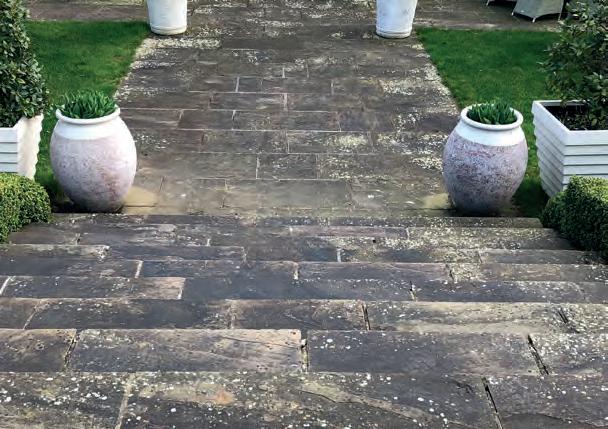



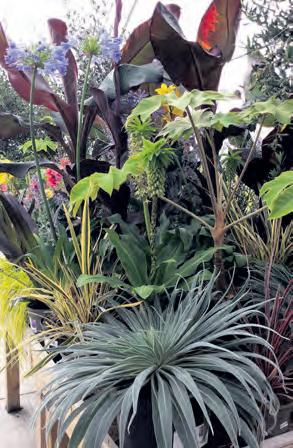

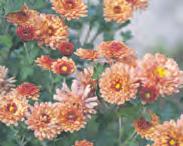









John Boman’s self-published novel The Gardening Club is sure to appeal to many gardeners.



The Dorset author’s basic idea that most women will recognise, and most men will deny, is that when a group of men get together, they talk and talk about what needs doing but rarely do. The Gardening Club are five retired men from different backgrounds who share a shed on an allotment, they moan about the pests in their town; they do act, but it doesn’t all go well.
It feels like a good classic tale from the pen of a Bournemouth based author whose own background was gardening. His dad worked for Suttons Seeds from the age of 14 until aged 74 on their last day in Berkshire. He was their seed analyst.
John likes gardening but says “I’m not very good.” He was self-employed in his own small businesses from 1967 to 2010

plus. “Some good, some disasters; much like gardening!”
John has written two books and started a third., The Tyranny of Friendship which is mostly set around Bournemouth and the New Forest. Published in 2020 it deals with two close friends from school who go their separate ways as adults, one becomes rich and successful, the other to an ordinary boring life. An event that drove them apart, brings them back together years later.
John and his wife moved to Dorset in 2002.
His ideal was a literary agent but he self-published, impatient to see it in print and hoping Amazon might sell lots based on lots of self-promotion.

John’s advice is: “Never put it off until tomorrow... because if you do it today and enjoy it... you can do it again tomorrow.”
Both novels are available from Amazon.
The Gardening Club
Five retired men from different backgrounds share a shed on an allotment. One January day they agree to stop moaning about ‘pests’ in their town and take action. What begins as a bit of fun turns into tragedy. The humour grows darker.
The Tyranny of Friendship

Mainly set in and around Bournemouth, Poole and the New Forest. Two close friends from school days are separated as adults by hiding a crime in the New Forest. They are brought back together years later by an unusual young woman. Both available on Amazon books, paperback, Kindle or contact johnmboman@aol.com

Gardening as a background to fiction and drama is nothing new. One Dorset author chose the colourful theme of retired men in sheds for his second novel.
Having already installed over 30,000 systems to date, you can rest assured in the knowledge the C.H.R.I.S ® system is the very best available on the market today and is the only system specifically designed for conservatories. The C.H.R.I.S ® system is a cost-effective solution which insulates your conservatory for a fraction of the cost of a new tiled roof. For complete peace of mind, we offer a 10 year insurance backed guarantee.







Autumn will soon be with us- and with it all the challenges that September brings to the garden - planting for next spring, tidying and ensuring borders stay as good for as long as possible. For many gardeners it the most popular month of the year – and one of the busiest. So, a few garden accessories can come in handy. So, it’s important to get some help. There are so many products lined up now to take off the hard physical work in the garden that most of us would be crazy not to seek help. At Country Gardener we are always on the look out for great products and fresh ideas so here’s a few to help take the strain and make the garden even more enjoyable.
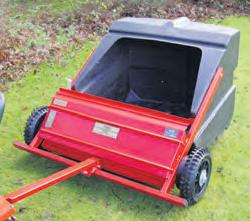

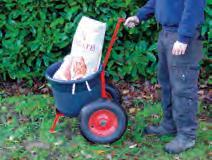

Since 1986, SCH Supplies have been dedicated to building machinery specifically for groundskeepers. Their product range fits perfectly between domestic garden products and heavy industrial farm machinery.







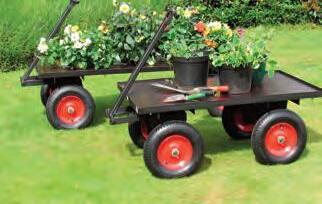


The TS98 lawn sweeper collector collects leaves, cut grass and lawn debris. It is robust in construction to withstand prolonged heavy use. A differential mechanism allows the sweeper to be manoeuvred in tight corners without the wheels “scuffing”. The differential mechanism also allows both ground wheels to drive the pick-up brushes giving it superior sweeping power. The height adjustment is simple, allowing it to be used on many different surfaces. The main drive is transmitted via strong metal gears.
The large capacity solid plastic catcher is rot and tear-proof and straightforward to empty. Reversing onto the tipping heap can be difficult for some, but it is made easier with the TS98 as it only has two wheels in contact with the ground.

For a free brochure featuring over 200 British built machines, contact SCH on 01473 328272, email sales@schsupplies.co.uk, or visit their website to find out more www.schsupplies.co.uk

Are you tired of plodding up and down the garden to open and close the greenhouse windows with the weather being so hit and miss? Using the power of the sun’s warmth alone, and therefore only triggered when needed, Bayliss Autovents take the worry out of an overheating greenhouse and help maintain an internal environment favourable to plant growth wherever the clouds may be! Bayliss Autovents have been manufactured in the UK for almost 60 years. They are not ‘throw away’ items as they have been designed and tested to last many years. Should the need arise, each part of a Bayliss Autovent can be serviced and the company carry spares for all current units as well as many earlier models. And, at the end of their usable life, 99per-cent of the parts can be recycled.
Bayliss Autovents 01335 342981




www.baylissautovents.co.uk
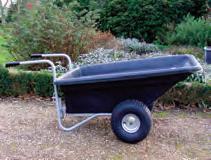





Providing you with a secure grip, cushioned insole and easy slip on and off design.



“These are comfortable, and easy to get on and off. They are soft, pliable and keep feet warm and make walking over uneven ground easy. The sole gives a good grip on smooth services”.


AS USED BY FARMERS & GROWERS FOR OVER 80 YEARS
Makes
4 weeks!
AVAILABLE
FROM...
WWW.GCPLANTS.CO.UK
TEL: 01830 806813
We offer special all counties prices when advertising with our features, plus 100 words of free editorial with an advert.
Speak to one of our sales people for more details.
The Buckingham Shoe is ideal for anyone who finds long boots difficult to get on and off. They have an easy slip on and off design and handy pull tab which makes the job even easier. They are extremely comfortable with their cushioned insole making them ideal for long days in the garden, and their excellent grip makes them a great walking shoe. Their natural neoprene material keeps your feet cool in the summer and warm in the winter making them an all year-round shoe and a great investment.

Find your local stockist at www.townandco.com
‘QR’ (Quick Return) compost activator has been helping gardeners make compost and improve the health of their soils since the early 1930’s. Invented by Maye Bruce, one of the founder members of the Soil Association, ‘QR’ became popular all over the world until the 1970’s.

Made from a blend of dried herbs, ‘QR’ speeds up the decomposition of organic matter. There is no turning required and compost can be made in as little as four weeks. It is suitable for use with garden or kitchen waste in all types of compost bins. ‘QR’ is easy to use – simply add water to the powder and apply to the layers of the heap during its construction.

Available from Exedra Nursery, Stroud (07487 537026) and online at Gardener’s Cottage Plants (www.gcplants.co.uk. or tel 01830 806813).

There are still plenty of late summer and early autumn plants which need to be kept under control and well staked. One great idea is using Rivelin Glen Products which are well designed wire anchors. They are quick and easy to attach to concrete posts (without drilling) to act as an ‘eye’ by threading wire through them to create a trellis system. The Gripple Trellising System is ideal to use with these Wire Anchors as the wire does not stretch, takes up to 100kg load and has a life span of 15 years. You can achieve multiple rows with one length of wire and two tensioners so it’s no more sore hands or sagging wires. Rivelin Glen Products are the main stockists of the Gripple Trellising System. Wire Anchors cost from £10 a pack of three. Gripple starter pack £19.75p www.rivelinglentproducts.com. Email info@rivelinglenproducts.co.uk or call 01246 462666
Grace Lansbury has been a member of a local gardening club for over 25 years but she’s never been as worried as she is now about the future of these clubs and urges gardeners to get out there and join up
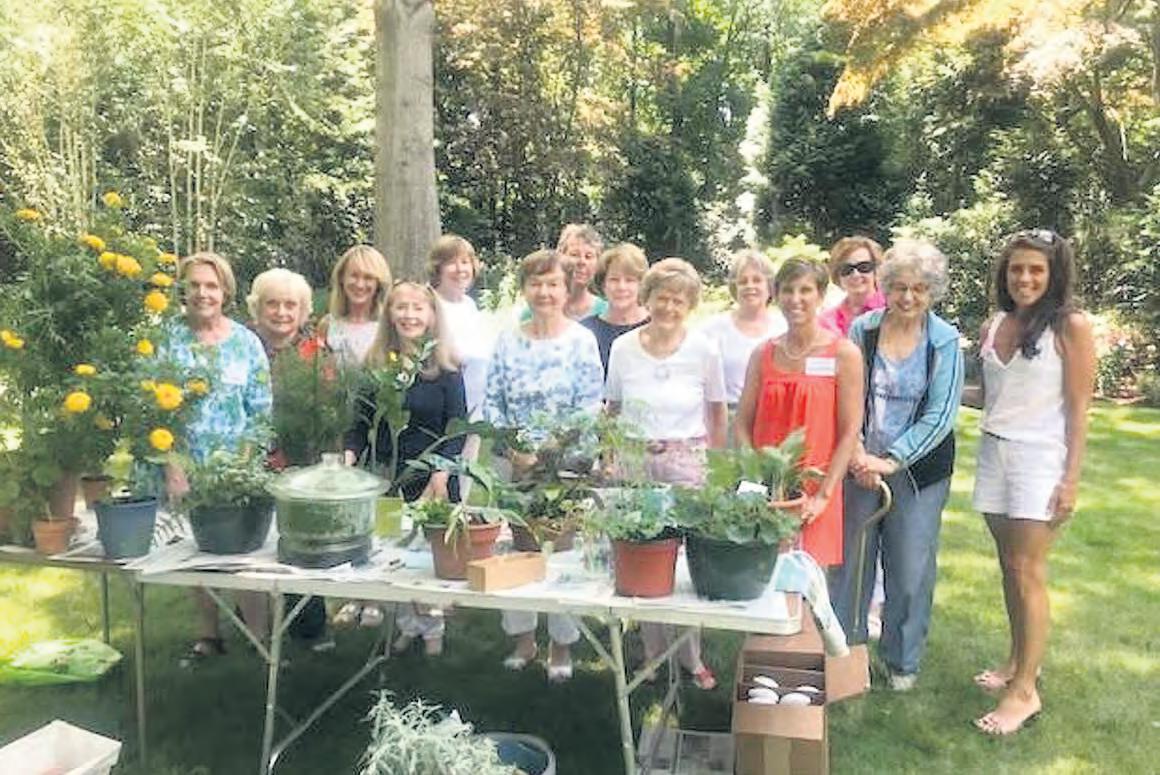
As I understand it gardening clubs are struggling, membership is declining, people seem reluctant to get involved in helping run and organise them.
So, this is a sort of plea to promote what wonderful things gardening clubs are and how they are worthy of our efforts and hard work.
I’ve been a member of three gardening clubs in the past 25 years and loved every moment of it. I’ve made friends, visited wonderful gardens and learnt a lot from some great visiting speakers.
There is of course a factor which has been a huge issue and is now being seen as the turning point in the fortunes of gardening clubs and horticultural societies- Covid. The big shutdown in all our lives brought the guillotine down on gardening clubs.
I wonder if they will ever return the way they were?
We all must try.
I read some statistics the other day which said that 43 per-cent of gardening clubs in the south of England didn’t re-open after Covid. Certainly the path back after the pandemic was painfully slower for many clubs.
Too many people seemed to have lost heart.
I spoke to the RHS and the news was a bit better. They reported that yes while a lot of clubs closed, mainly due to falling membership in predominantly rural areas, others are still opening or at least returning. The roll call of affiliated members they claim has remained constant over the last ten years with only real problems over the past three years.
All of Britain’s 3,000 gardening clubs are eligible to join the RHS Affiliated Societies’ scheme. You will gain access to a wealth of benefits, knowledge and resources including one free annual visit for up to 55 people to an RHS Garden.
I would urge any garden club to join. It is worth it just for the advice and support alone. Anyone who’s been involved in a charity as a trustee or on a local club committee will know how much work goes into doing just the basics properly. Managing membership lists, booking halls and speakers, keeping up the books and publicising events all take time.
When I asked some local horticultural clubs what their biggest challenge was, many said that it was hard to broaden membership beyond retirees as younger people working longer hours and with busy family lives simply didn’t have the time to get involved. The business of running the clubs came down therefore to older people and there is a genuine concern that unless younger committee members can be found, the future of such clubs will be uncertain.
One club just 15 miles away from where I live worked hard to get things back after Covid but there just wasn’t the support and it’s no fun running a club for ten people, so after over 60 years they closed.
Many clubs were making a big effort to appeal to younger members, citing children’s classes at their local show, working with schools on garden projects and using social media to promote events and connect with local people in different ways.
In a nutshell – the benefits of garden societies and usually for less than £10 a year include meeting people with a passion for gardening: visiting speakers and trips to gardens, including those not normally open to the public. I’d urge you to find your local club and get out and join.
You are unlikely to regret it.
fertile compost without turning in as little asMany garden clubs are making a real effort to recruit younger members but pressure on everyone’s time makes it difficult
If you have any views, ideas, suggestions comments or gardening tips you would like to share with Country Gardener readers then email us at editorial@countrygardener or write to us at Mount House, Halse, Taunton, Somerset TA4 3AD
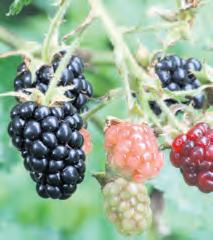

Already one in ten homeowners are estimated to have replaced their lawns with plastic grass and a further 29 per-cent are planning or considering making the swap.
The environmental impact of shedding microplastics into the soil and waterways, the dramatic impact on garden wildlife, the increases of flooding, contribution to global warming and a possible danger to health, are all factors against plastic grass.
Six baseball players in Philadelphia died of a rare brain tumour, all had played on plastic turf for years.
All artificial turf is made with toxic PFAS compounds and some include recycled tyres. The tyres can contain lead, benzene, arsenic and other heavy metals which become more toxic with age as the structure breaks down.
Why are these products on the market and especially on school playgrounds and sports fields?
Jeannette Redman by email
We are lucky to have two resident hedgehogs and it’s an honour to have them in the garden. The trick seems to be plenty of fresh water and providing them with a tray of kitten food which seems ideal for their smaller mouths. These two are surprisingly noisy and you can hear them in the evening producing a variety of strange noises. But quite adorable.
Pam Anderson TauntonThe purpose of my letter is I guess to show there’s always another view on things. My Devon garden like everyone’s has been swamped by rain in July- the grass is long and lush and I haven’t been able to cut it for too long. The borders are overgrown, and green is the dominant colour,lots of it.
We have all been moaning about it.
Then last week along come some friends visiting England from Texas. They have been in a whirl of delight
I am writing to redress the balance on the topic of allowing dogs in gardens open to the public.
The issue of lost income works both ways. We visit gardens as a couple and having gardened for 30 years, enjoy seeing new gardens very much for inspiration. If a garden is a reasonable distance from home, we need to take our dog with us as it would not be in the dog’s welfare interests to leave it at home alone for a long period. We have no-one to look after it and paying for dog care would make visiting an NGS garden for an hour or so, prohibitively expensive and inconvenient.
Many garden visitors in our region are holidaymakers and they also cannot leave their dogs in their cars or holiday accommodation. Sadly, we have all too often been to places where one of us must stand outside the garden holding the dog whilst the other goes round, usually as quickly as possible. This spoils our joint enjoyment of the garden and doubles the time we need to allocate to a visit in a day. We already feel excluded from joining the RHS as their gardens don’t allow dogs in [except for some very limited times in a year which may not suit] and the National Trust also limit access despite a recent dogs welcome campaign. Many of their formal areas are still dog-free. Although I wish it were otherwise, perhaps the best way forward is the status quo. Some gardens allow dogs in and others don’t. At least then we all get to go to at least some gardens, sit on the lawn and smell the roses.
Alison Cremin Verwoodat how wonderfully green everything was and what a pleasure it must be to have such a verdant, growing garden. Their garden is apparently a dustbowl, brown and arid after weeks and weeks without rain. The country is brown and dusty and windy and unpleasant, they claim.
England, my friend said is so wonderfully green. True -and a different perspective on this summer I would say.
Annie Streeter BridportWe left a lot of our garden to nature this summer. We made the decision in April and left large areas to look after itself-just keeping token bits of pathways and some of the smaller borders tended. There has been one wonderful, unexpected benefit beyond what has I hoped made the lives of wildlife much happier and easier. And it’s the blackberries. In late July our garden almost suddenly gave forth the most wonderful harvest of large, plump blackberries, all I think from new growth this year. I’ve already been able to pick several punnets full and given some sunshine there will be more to come. Unexpected and more delightful because of it. But what about next summer? More of the same?
Judy Branson GloucesterFor the first time ever I’ve been keeping old banana peels in a jar- thinking that at some stage they might come in handy in the garden. For those who don’t know the theory is that banana peel is rich in potassium and is excellent for tomatoes and peppers. The calcium content is supposedly excellent for preventing blossom end rot in tomatoes.

So, from May onwards I have taken the jar to the greenhouse, cut the peel up and placed generously around the roots of tomatoes and peppers. And the end of the story is a happy one. Coincidence or not, I’m enjoying the best tomatoes I’ve had for a long time.
Maggie Preston Petersfield
Following on from your article about cats in the garden in the last issue. We used to have real problems with cats coming in from our neighbours in both sides and then one of them told me their cats hated the smell of rosemary and thyme. So we planted some of it on both sides of the garden and the cats clearly do detest the smell and they never bother us at all.
Wendy Wright PortsmouthWe have a very healthy disease-free box hedge. I put its health down to the fact that as it is just outside my kitchen window it often gets fed with tea leaves. The tea pot solution has tannic acid and nitrogen and it helps enrich the soil. I also believe using leftover tea leaves and tea bags helps hydrate and accelerates root formation and growth rates.
Vera Davies PooleCertain varieties of delicious, succulent figs will thrive in warmer spots in our gardens and yes, its worth making the effort for this exotic, plentiful and unique fruit.
First the not so good news. Fig trees are not ideal for our northern European climate. They belong classically to the sun-soaked conditions of Portugal, Spain, Greece and Italy and so on, where bountiful and delicious figs are produced and enjoyed. But there is some better news.
Certain varieties, but not all varieties, will happily crop in the open, in the garden, certainly in the south and west of England.
If you know the spot in the garden which is most sheltered and sunniest, that’s where the fig tree will perform best.
Do not plant the fig tree in a cold, wet or damp place. Basically, if you get the spot right and you plant the tree in a container, then growing figs will be a lot easier. Sweet, succulent figs may sound like exotic treats for warmer climes, but if you choose the right variety, you can enjoy freshly picked home-grown figs.
Left to their own devices, figs (Ficus carica) can grow into large bushy trees, with big hand-shaped leaves that are highly ornamental, bringing a lush, tropical look to gardens. But if you want to maximise cropping, fig trees are best trained as a fan against a sunny wall and their roots restricted in a large container or with paving slabs inserted vertically around the rootball.
Limiting their root-spread reduces their vigorous leafy growth and helps them focus on fruit production.
Twice-yearly pruning also keeps these vigorous plants at a manageable size and improves fruiting. Fan-trained figs can be restricted to 1.8m (6ft) tall and 3.5m (11½ft ) wide if necessary, but will happily grow to twice that width if you have the space. In the UK's cool temperate climate, figs develop seedless fruit without fertilisation (parthenocarpic fruit)so you don’t need pollination . The fruiting process of figs is unusual – the flower is enclosed within what becomes the fruit, so it is never visible.
Figs usually produce two crops a year, but only the first of these usually ripens: The first crop is produced from embryonic figs that start to form in late summer at the branch tips. They stay as pea-size fruitlets until spring, when they start into growth, and will have enough time to ripen over summer. As the tiny fruitlets form at the shoot tips, they are prone to frost damage, so winter protection is beneficial.
The second crop forms on the current season’s growth later in spring and early summer. These figs rarely have time to ripen outdoors. They can grow to a reasonable size but will remain hard and green. They may survive the winter but will fail to grow and ripen the following year. They are best removed in autumn.
There are several varieties of fig suitable for cropping in the UK, offering variations in hardiness and fruit size, flavour and sweetness. The best known is ‘Brown Turkey’, which is hardy and should fruit well outdoors in most of the UK. It is widely available and has an RHS Award of Garden Merit (AGM), which shows it performs well.

So, to prepare for planting in the ground, dig a large hole, 60cm deep and wide, at least 20cm away from the base of the wall or fence. Then line the sides with vertical paving slabs. These should ideally form a rim higher than the surrounding soil, to stop any roots escaping over the top.
Leave the base of the hole unlined, but add a 10–20cm layer of rubble or stones to
prevent the roots going downwards while ensuring good drainage. Then refill the hole with soil.
Figs are usually hardy, healthy, vigorous plants that are not prone to diseases and grow well in most locations. They may sometimes be affected by scale insects or red spider mites when grown in a greenhouse.
Fruit ripening can be a problem, especially in cooler locations or poor summers. Fig trees need a warm, sheltered, sunny site, ideally against a south-facing wall and the As soon as the figs start to ripen, cover the plant with netting, held away from the fruits with canes, to protect them from birds and squirrels.
Q. Can fig trees survive the winter?
A. Despite their Mediterranean origins, fig trees are surprisingly hardy but for young trees and during particularly freezing weather it's sensible to provide a little protection to prevent frost damage. The bare branches can be wrapped in horticultural fleece or packed with dry straw.
Q. Should I plant a fig tree next to my house?
A. Fig trees can grow in most types of soil if the soil is well-drained and contains plenty of organic material. Space fig trees at least 20 feet away from any buildings or other trees. They are fast growing and have strong root systems.
Q. When should I prune my fig tree?
A. Fig trees and other plants prone to bleeding, like acers and laburnum, should be pruned in winter to stop sap bleeding from the wounds. Pruning a fig tree at the wrong time, during spring for example, can cause them to bleed profusely. This loss of sap can weaken the plant and in extreme cases may cause death.
Q. Can I cut the top off my fig plant?
A. Topping your fig is a helpful method of controlling height. Since you are literally cutting off the top portion of your plant, all you need to do is decide when your plant has grown tall enough and then snip the top off.
Q. How tall should a fig tree be?
A. Depending on the variety, fig trees naturally mature around 10- to 15-feet tall or larger! Many fig-tree growers find that keeping them between six to eight feet tall is most manageable, especially in a container environment. Some fig trees have a natural bush-like appearance if allowed to grow naturally.
Q. Do fig plants need big pots?
A. Look for pots that are six inches wider in diameter and an inch or two taller than the growing pot your fig came in. But don't get a pot that's too big as excessively large containers may allow root rot to take hold of your plant.
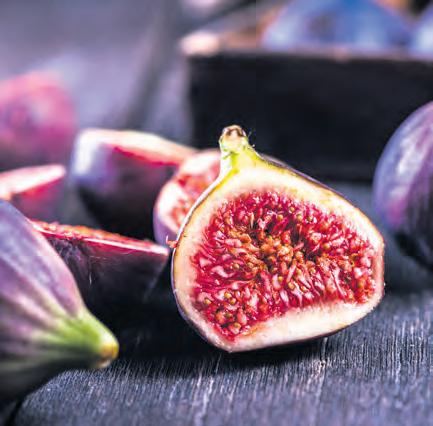
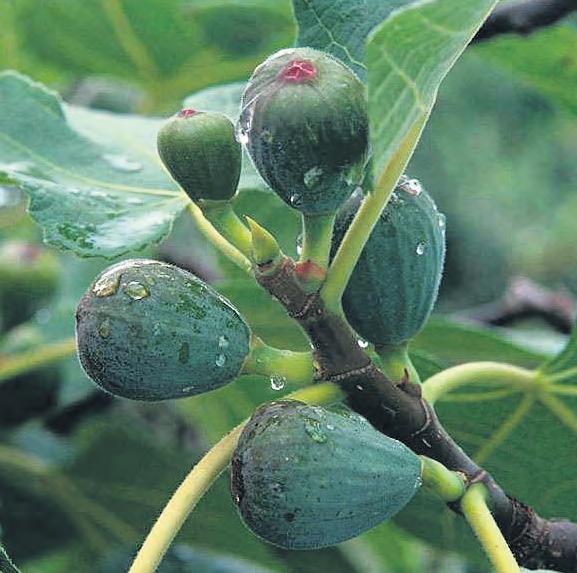
• The ideal time to plant a fig tree is from November to March.
• Prune in winter to stop sap bleeding.
• In June prune back any new growth to a five-leaf length.
• Continue to water weekly with roughly five litres/week from May onwards.
• From November to April if the temperature starts really to drop,protect new growth against frost with a double layer of garden fleece. This protects the mini pea-size figs.
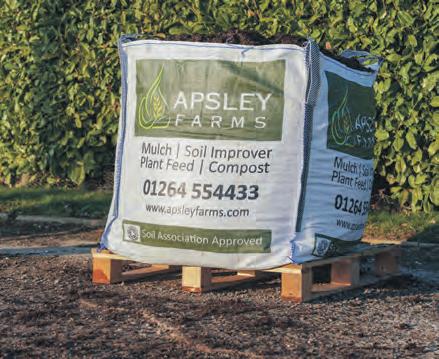
• If you like figs annually, then you will have to plant the tree in a container 45 cm in diameter and at least 40 cm in depth, with good drainage holes, covered with broken terra cotta pots. A bigger container results in a bigger tree.
• Keep the plant free from weeds and particularly grass.
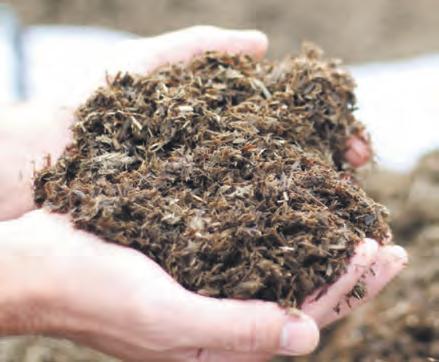

• Figs will appear at the new growth each year.
• Drought conditions will kill the fig plant but the more sun the better.
Taking everything into account, fig trees cope better in containers.
Ideally you should be able to move the pot around a little to cope with any low temperatures so you can store the fig tree from November onwards in a garage or a shed, to avoid frost damage to the tips of the shoots. It is the tips of the shoots which will produce next year’s crop. If the tree is left outside during the winter months. It is best to wrap a double layer of garden fleece around the main branches to stop the tips of the branches being damaged by winter frosts.
You can of course bury the container if the rim of the top of the container stays just above ground level. Provided you water the fig tree very regularly, you can start the tree off in a reasonably small container, for example 35 cm diameter. Always make sure the container has good-sized drainage holes. Repot the tree after a couple of years to a bigger pot. You can do this several times.
Growing the tree in a pot controls excessive shoot growth, while retaining regular crops of figs. Use soil-based compost such as John Innes compost number 3. Always choose a pot or a container which is the same width at the top as at the bottom. These types of pots are more stable, when the wind blows. All the same, trees in pots are best secured to a wall or a post to prevent them from blowing over and the pot being broken or the tree being damaged. Always remove the late-developing figs before the winter arrives. In the UK, this second crop of figs will only ripen if the tree is grown in a greenhouse.
September always seems to arrive so quickly. It remains a special month in the garden for a whole list of reasons. It’s one of the multi-tasking months when lots of jobs seem to arrive in the space of a few weeks.
It’s both a key month for planting and for planning in the garden.
It’s the time to plan spring colour in the garden by selecting and getting spring bulbs in the ground.
It’s a lovely month though; harvest time, beautiful angles of sunshine, and still hopefully this year especially some warm weather to enjoy. And it’s also quite a productive month for sowing seeds, planting bulbs and growing new plants –some to enjoy soon, and some to get started for next year.
Planting in September is a good idea as it provides you with an earlier crop in spring, makes use of otherwise
empty soil and saves you time on spring planting. Plenty of vegetables and flowers can be sown or planted in September, including hardy annuals like pot marigold and love-in-a-mist, which will bloom a couple of weeks earlier than those from a spring sowing. In the vegetable patch, crops like garlic and broad beans can be planted now, for earlier harvests the following spring and summer.
Wildflowers are fantastic for wildlife; they provide food for pollinating insects, wild birds and bats, as well as dense shelter for other small animals. They’re fastgrowing, low-maintenance, help to control weeds, and look fabulous too – what’s not to love?
Trees and shrubs need to be bought and made ready and September is the start of a busy period of getting them in the ground, staked and watered.
Many gardeners find using rootgrow mycorrhizal fungi an essential starting point to success when planting. You can treat any size of plant with rootgrow, from mixing a couple of teaspoons into the compost of a seed tray to treating a whole planting project. The mycorrhizal fungi in rootgrow will quickly colonise new plants enabling them to explore a much greater volume of soil in search of nutrients and water resulting in faster establishment and greater yields. The empathy range of seaweed stimulants and fertilisers work in harmony with the mycorrhizal fungi, helping to nurture and feed the life in soils and subsequently the plants themselves. rootgrow.co.uk

September is a good time to take stock of what worked in the garden over the summer, and to plan for next. It is the time to order bulbs, sow winter vegetables and prune disorderly shrubs. But where to start?
One of the best ways to get informed knowledge is to join a horticultural society or get involved with a gardening charity.
Membership of the charity WFGA (Working for Gardeners Association) opens a world of practical workshops, events and online talks, all run by horticultural experts. It is an excellent place to pick the brains of those who know and who are happy to share advice. Its training scheme (WRAGS) also places would-be gardeners in outstanding gardens, where they learn horticultural skills from head gardeners: ideal if you need a helping hand in your garden. Become a member to tap into a world of knowledge and experience.
If you think your garden would benefit from a trainee, or you would like to become a member, email admin@wfga.org.uk or visit wfga.org.uk

We produce and grow the largest selection available in the UK. Plants are pot grown and suitable for garden, patio or bonsai.
Visitors welcome Mon-Sat 9am-1pm & 2pm-4pm
Barthelemy & Co (DCG), 262 Wimborne Rd West, Stapehill, Wimborne, Dorset BH21 2DZ Tel: 01202 874283
enquiries@barthelemymaples.co.uk
www.barthelemymaples.co.uk

Barthelemy & Co near Wimborne in Dorset was established by a French nurseryman almost a century ago and the Skinner family now specialise in propagating and growing Acer palmatum – or Japanese maples as they’re known.
Throughout spring, summer, and autumn the delicate foliage of the acer presents exquisite shadings of Mother Nature’s gold, pink, purple, green, yellow, orange and red. Acers are a delightful addition to anyone’s garden, giving an aura of peace and tranquillity. The ten-acre nursery at Stapehill has a huge collection of Japanese maples and expert staff are on hand to help select the right variety and to offer advice. Over 100,000 acers are produced at Barthelemy and Co every year approximately 15,000 - 20,000 of them are grafted named palmatum varieties, as one of the largest specialist growers of their kind.
Barthelemy & Co, 262 Wimborne Road West, Wimborne BH21 2DZ Tel: 01202 874283
www.barthelemymaples.co.uk
Head Gardeners and Garden Owners: enthusiastic and hard-working help two days a week can be yours.

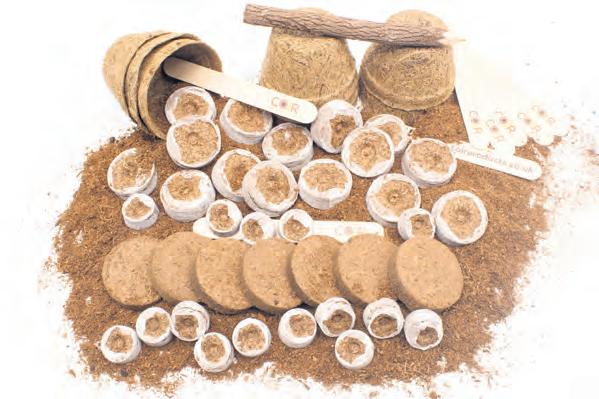
Are you looking to get children involved in gardening? CoirProducts.co.uk (Salike Limited) specially curated coir kids bundles are ethically sourced and produced, and are perfect to get children started off on their sustainable gardening journey. With three unique packs to choose from, My Kids Playground, My Little Gardener, and My Secret Hobby, each pack consists of natural, biodegradable, and peat-free products that are suitable for growing a variety of plants and crops. They include CoirProducts coir pots that are the perfect alternative to plastic pots, CoirProducts CoirCoins that are widely used for sowing seeds and are unique in the market with their fully biodegradable cover, and CoirProducts coir discs which are a peat-free potting mix. With many positive benefits of gardening for children, CoirProducts sustainable coir bundles are also vegan-certified and easy-to-use. Coir retains water, has high air porosity, and excellent drainage, helping plants develop strong and healthy root systems.
Website/shop: www.coir products.co.uk

Email: hello@coirproducts.co.uk

Take on a WRAGS (Work and Retrain as a Gardener) trainee and you will get a dedicated and willing helper, plus the satisfaction of nurturing the next generation of gardeners.

Your part of the deal? You pay the trainee the National Living Wage and provide horticultural training.
WRAGS is a unique scheme, administered by the WFGA, designed for career changers and those returning to work. Our trainees are keen to learn and hard workers.
For more information: admin@wfga.org.uk wfga.org.uk
Quite by chance in 2012 I found that there are two meadows at my home after 29 years of being completely unaware of them.
They take up nearly two acres and are completely natural.
Usually, sheep graze the fields but for some reason they were excluded in the spring of 2012 and suddenly a profusion of flowers emerged together with grasses, reeds sedges, and rushes.
Associated with this came birds, butterflies, bees, other insects, micro organisms and I am sure invertebrates and small mammals, some not so small such as roe deer.
This was very exciting because I know that since the 1830s over 97percent of meadows have disappeared mainly because of the change to intensive farming methods to increase food production.
Inputs of weedkillers and fertilisers combined to destroy 'weeds' so that they could be replaced by fields of uniform highly nutritious ley grasses. Hay making for winter animal feed is costly and labour supply dwindled as more and more country dwellers moved to towns for work. Of course, housing development took up more space. After some research I found that the two previous owners of Hillview had never used chemicals on these fields which meant that for at least 60 years no chemicals had been used.
I found it astounding that the huge seed bank of grassland flora was there and waiting for a chance to germinate and thrive.
Subsequently I began to take a huge interest in meadows and their fringes and was lucky to find a wonderful book called Meadows by George Peterken (ISBN 978-0-9564902-4-7) from the British Wildlife Collection number 2.
A plain grass field in March 2012 that declines northwards to a stream and pond. The field is surrounded on three sides by mature native hedges with large oak trees in each corner whilst alder, willow and hazel grow along the stream.
The soil is heavy clay so that during wet periods streams emerge and flow northwards so providing different habitats. 0ne month later the sheep have been evicted and the meadow gets into gear. The growth looks haphazard but everything that happens is ordered and sequential.
Peterken likens this to the migration of the cuckoo that 'arrives' in April and the meadow produces low growing flora that completes its life cycle early.
Examples are primroses, ajuga and celandines. The plants 'sing their song' in May (as above) with a huge growth of flowers such as
dandelions, cardamine, orchids and yellow rattle. They 'change their tune in June' as by this time grasses are already growing again in sequence with sweet vernal grass the first. This is the grass that gives hay its sweet smell especially when just cut. Now the herbs must grow taller above the grasses to attract pollinators.
Examples are knapweed, scabious, marsh thistles and buttercups. Others like vetches may climb above the grasses.
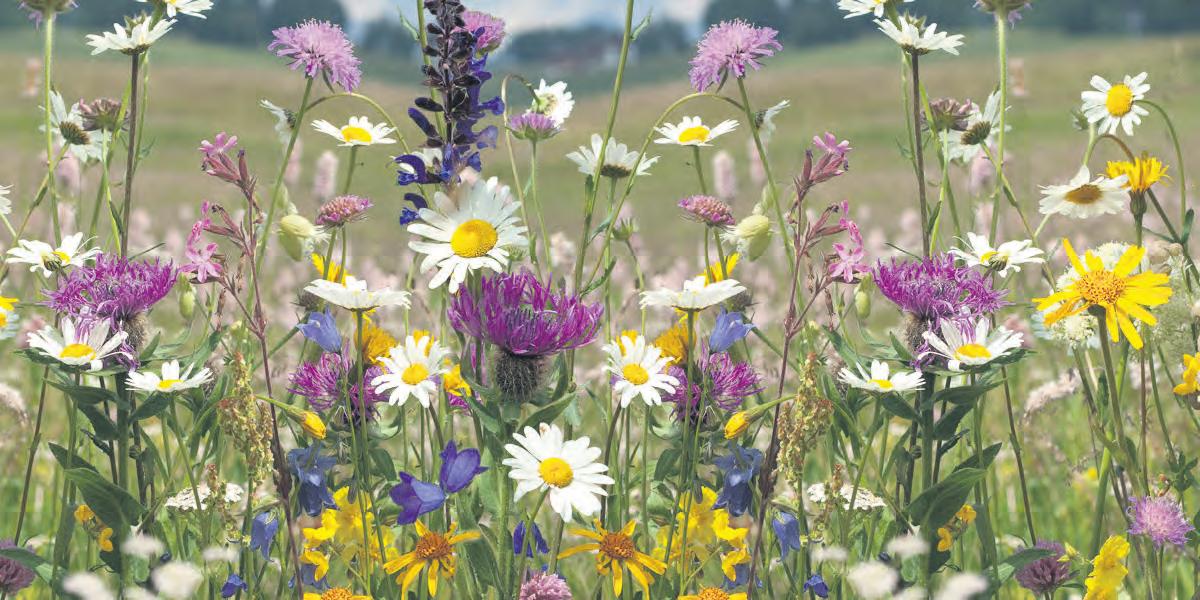
Finally, the cuckoo 'flies away' in July and the hay will be cut in July or early August.

Meadows are ephemeral.
Towards the end of July there is a disastrous and violent event. The whole meadow is cut just at the prime reproductive season and made into hay to provide winter feed for animals thus destroying everything that had been living there unless a strategy for survival could be made SUCH STRATEGIES WOULD INCLUDE:
• Living in the roots or soil where they are safe from cutting.
• Escaping from the meadow to other habitats e.g. deer, rabbits, small mammals.
• Surviving in the uncut margins and hedge bottoms.
• Timing their life cycle so that it is over before mowing, Examples are primroses, bluebells, ajuga, violets and germander speedwell.
Diana Redfern shares the personal story of the joy she found in having two meadows at her Devon home where 106 plant species were recorded on land where chemicals hadn’t been used for 60 yearsThus the meadow is only a temporary home for some species, an overflow place to catch prey as dragonflies do or to find pollen and nectar as do bees, moths and butterflies. Crickets and grasshoppers abound. They tend to be omnivores.
They are easy to see and hear as they jump through the grasses. Apart from a huge diversity of life the meadows also give much pleasure and sanctuary to humans. A path is cut through the meadows so that people can walk amongst the flora and fauna.

It is also a place for children and adults to listen, see and learn especially with the guidance of an expert.
In July 2016 two botanists and an entomologist came to survey the meadows and its surrounds.

The number of plant species recorded was 106 including trees and hedges.
Remember the meadow is not a permanent home for many species.
'I was a bit disappointed to hear that most species are common but that' it is so unusual to find such biodiversity. Most species are considered common but it is the number of species all together in a small area that is sadly unusual.' But now more people are trying to encourage wildflowers as encouraged by NoMowMay for lawns.
The entomologist wrote that these are species rich fields with 180 insects caught in a large net. These represented 41 species and six orders of the class Insecta.
All commented that certainly some species were missed and other new ones would gradually establish themselves.
In conclusion meadows are important for some wild animals but most species rely on other habitats and just take seasonal advantages of meadows that are cut.
This is because such meadows are not natural and so there is always danger of disturbance and destruction.
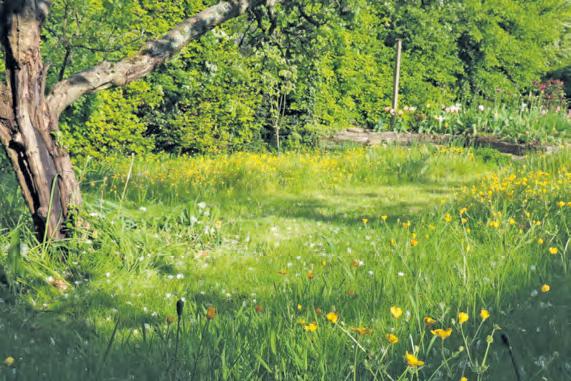
It’s an area of permanent grass where wildflowers grow – not a bed of cornfield annuals like poppies nor colour themed flowers formally planted.
The reason it’s important to make the distinction is that a bed of poppies grows on fertile soil. Wildflower meadows grow better on unproductive
soil, where vigorous grasses don’t out-compete the flowers. The best time to create and sow your meadow is in autumn. You might want to turn some of your lawn into a new wildflower meadow.
It needs to be somewhere open and sunny for most of the day, but can be flat or sloping. A relatively large area is best, where you have space for growing a range of wildflowers.
Reducing the fertility. Your soil is likely to be too rich for a meadow if it’s had plenty of fertiliser added over the years. The best way to reduce the fertility is to remove the top three to six inches of topsoil, using a turf cutter, or a spade and muscle-power!

If you don’t want to strip the soil, you can reduce some of the fertility by sowing a crop of mustard plants in the first year. Part of the brassica family, they’re notoriously hungry plants and will remove some of the nutrients from the soil as they grow.
Dig the soil and get rid of any weeds. You want to create a fine tilth (soil which looks like breadcrumbs) for seed sowing, as you would with a lawn.
Once you have bare soil, lay black plastic or weed control fabric over to weaken weeds. If there is lots of nettle or dock, this may take up to a year to be effective.
If you would like a complete list of the plant and insect survey please email me at dredfern@cooptel.net
Clockwise from top left: Blue bugle, common orchid, birds foot, trefoil and knapweed all flourishing in not very productive soil; wild animals regularly take advantage on meadow habitats; cutting a simple path through the grass will allow wildflowers to flourish in uncut areas.

September is the favourite month of the year for many gardeners. It is more than just the fact that it is harvest time -although that is plenty of reason for it to be so popular.
September brings with it the chance to enjoy early autumn favourites -hydrangeas, Michaelmas daisies, dahlias, Japanese anenomies which all reflect the changing of summer to autumn. It also sees the return of the last few garden shows and plant fairs of the year all of which reflect the harvest feel with Malvern Autumn in particular staging the wonderful giant vegetable competition. So, let’s welcome and enjoy September and here we have some special places and events for you to enjoy.
The Picton Garden at Old Court Nurseries is a compact horticultural gem. During September and October, the garden is 1.5 acres of colour thanks to the wonderful collection of Michaelmas daisies which are at their best from 20th September to 10th October. Beyond the daisies is a wealth of autumn colouring trees, shrubs, bulbs, and ferns to add to the interest.
The adjoining nursery is well stocked with plants, almost all grown from stock found in the garden, so there is plenty to choose from to fill your own patch with a little autumn joy.
Old Court Nurseries, Walwyn Road, Colwall WR13 6QE Tel: 01684 540416 www.autumnasters.co.uk
Boscrege Caravan and Touring Park in Cornwall is a peaceful and picturesque park, set at the foot of Tregonning Hill, Godolphin National Trust and amongst tranquil Cornish lanes in an area of outstanding natural beauty. The park, open all year is close to the Cornwall coast and a few minutes’ drive to Praa Sands, one of Britain’s nicest beaches. So, if you are looking to take a luxury holiday (doggie friendly with dog friendly homes and on-site designated fields for the dogs too) in Cornwall in a either a self-catering caravan, lodges touring or even purchasing your very own holiday home then contact Boscrege Caravan and Touring Park.
Boscrege Caravan Park, Boscrege, Ashton, Cornwall TR13 9TG. 01736 762231 www.caravanparkcornwall.com
This event is a must for plant lovers or those looking for a pleasant day out in beautiful surroundings. There are several new specialist growers this year, including scented plants and exotics, promising a wide range of plants, and some crafts to buy. There will also be several wildlife and conservation charities with stalls. Admission to the Plant Fair is £7 and includes access to the beautiful Abbotsbury Subtropical Gardens on the Jurassic Coast between Weymouth and Bridport (normally £12.50). The fair takes place on Sunday 10th September from 10am until 3pm but visitors can stay and explore the Gardens until 5pm. Profits go towards supporting the National Collections, plant conservation and education in Dorset.
Tickets can be purchased on the day or online: abbotsburytickets.co.uk/events/plantfair-507/For Plant Heritage details: email martin.plantheritagedorset@btinternet.com or https://plantheritagedorset.org.uk/ Buller’s Way, Abbotsbury, Weymouth DT3 4LA
As we head into September there are some wonderful allotments and kitchen gardens opening with the National Garden Scheme. Growing your own produce can help keep you fit and motivated and inspire a great sense of optimism and our gardens are the perfect place to get you started. With most open gardens selling tea and cake, a visit makes a perfect, affordable day out.
Find a garden open near you: ngs.org.uk
Autumn is a lovely, peaceful time to visit the Abbey in its wandering valley to the sea. After a hot June and wet summer the gardens are flourishing with the hydrangeas in the Shrubbery at their deepest blue - months of deadheading in winter is rewarded by their glorious display. The tree ferns had children – now growing fast in the Fernery! The Walled Gardens are a place to relax and unwind with their autumn flowers and heady scents; for the energetic a walk to the beach at Blackpool Mill followed by delicious homemade cakes and scones or a browse in the gift shop is a lovely way to spend a day especially with a doggy friend!
Hartland Abbey itself – clad in the glorious deep red of the Boston ivy – is a fascinating look into family history spanning the generations since 1539. For Malory Towers fans there is a new quiz and map of all the locations. Series FIVE is coming soon!
Hartland, Stoke, Bideford EX39 6DT Tel: 01237441496/234 www.hartlandabbey.com
The 2023 season of Rare Plant Fairs draws to a close in September with four fabulous events, all set in interesting and unique gardens, with full garden entry included in the admission price.
The first Fair in September, on Sunday, 3rd September, is set in the beautiful grounds and gardens of Adwell House, near Thame in Oxfordshire, an idyllic spot just on the edge of the Chiltern Hills. Visitors are greeted with a magnificent herbaceous border which sweeps around the drive. The Parish Church nestles within the grounds and you are led around to the walled garden, with its herbaceous borders, roses and a superb collection of salvias. The Fair supports the work of local charity Aspire Oxford.
The fairs return to the historic gardens of The Bishop’s Palace at Wells for an Autumn Fair on Sunday, 10th September. The Bishop’s Palace lies at the heart of the historic City of Wells and is a place full of secrets, stories and stunning scenery, and home to the Bishops of Bath and Wells for 800 years. Surrounded by a breathtaking moat you can cross a flagstone drawbridge, under the portcullis and experience a true hidden gem in the heart of the City of Wells. There are 14 acres of gardens to explore.
Next up is a very popular event at Llanover House, near Abergavenny in Monmouthshire, on Sunday, 17th September. This is a 15-acre listed garden and arboretum with lakes, streams and cascades, created by the Rhyd y Meirch stream as it flows through the garden.
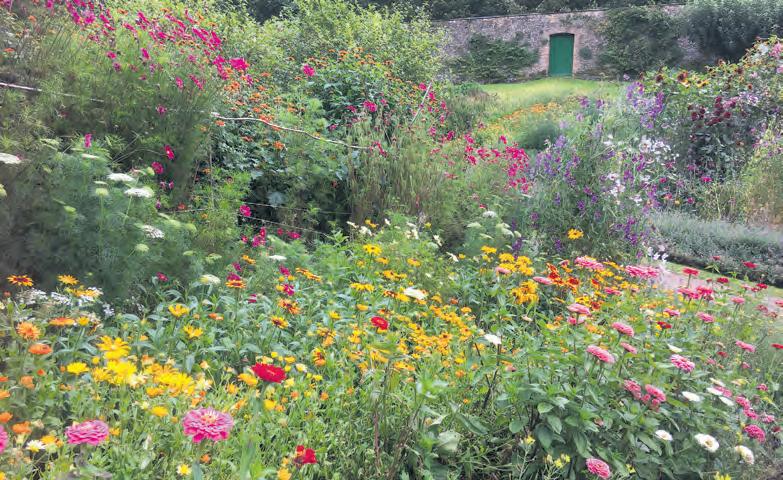
The final event is at Langford Court, near Bristol, on Sunday, 24th September. Rarely open to the public, Langford Court Garden is the sixacre private garden of Sir David and Lady Wills, and is set in a 19th century parkland with a ha ha, yew topiary and a late 18th century orangery.
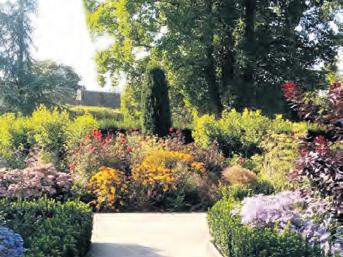
There is a great selection of specialist nurseries attending each of the Fairs, including several National Collection holders, all of whom are experts in the plants that they grow.
Please visit the website at www.rareplantfair.co.uk for details, including admission charges and a complete list of the exhibitors.
With a welcoming atmosphere and set in 12 acres of Cornish countryside only two miles from the beautiful sandy beaches of Praa Sands, Boscrege Caravan & Touring Park is the best place to enjoy your Cornish holiday.
Each of our luxury holiday homes comes with a private garden and Wi-Fi. Perfect
01736 762231

for families and couples, we are open all year, and offer seasonal pitches.
We offer the following:
• Designated dog walking fields


• Pet friendly accommodation

• Comprehensive storage
• Luxury holiday homes for sale
• enquiries@caravanparkcornwall.com

www.caravanparkcornwall.com


3rd September
Adwell House, Adwell, Nr. Thame OX9 7DQ
10th September
The Bishop’s Palace, Wells, Somerset BA5 2PD
17th September
Llanover House, Nr. Abergavenny NP7 9EF
24th September
Langford Court, Nr. Bristol, BS40 5DA
www.rareplantfair.co.uk

Please visit our website for full details of admission fees and times of opening.

Abbotsbury Subtropical Gardens
Sunday 10th Sept 2023
Large Plant Fair in beautiful surroundings
Wide range of specialist stalls
Admission is £7.00

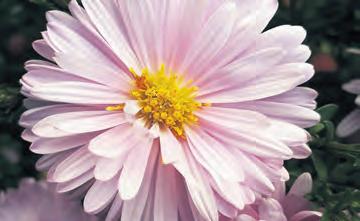
Find your perfect garden: ngs.org.uk

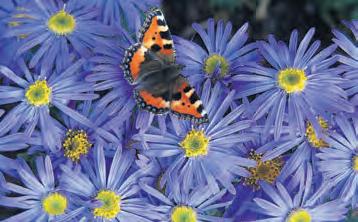
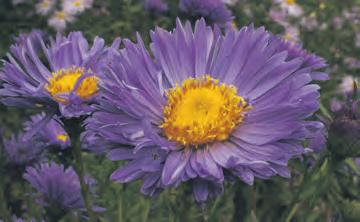

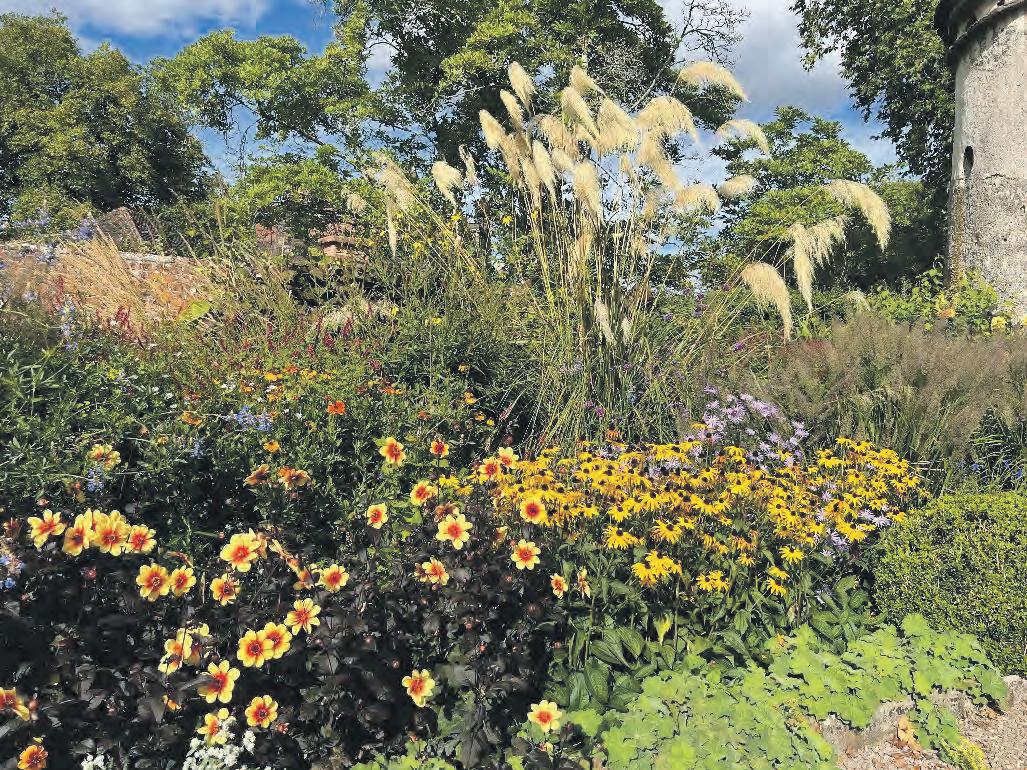


As summer comes to an end at Marwood Hill Gardens, late flowering herbaceous plants take centre stage announcing their presence as autumn tumbles in. Muted tones of pink and creamy Japanese Anemones mingle with deep, purple foliage of Cimicifuga and Eucomis ‘Zeal Purple’. Hydrangeas continue their everlasting display on the far hillside, while the trees overhead start their yearly cycle of slowing down revealing colourful tones in their leaves.
Looking out of the tearoom, while enjoying a cream tea, at the colourful spectacle in the 20 acres of gardens, makes a grand finish to a memorable walk around the garden – after, of course, choosing some unusual plants to take home from our well stocked plant centre and nursery.
Marwood Hill Gardens, Nr Guineaford, Barnstaple, North Devon, EX31 4EA
https://www.marwoodhillgarden.co.uk Tel: 01271 342 528
Email: info@marwoodhillgarden.co.uk
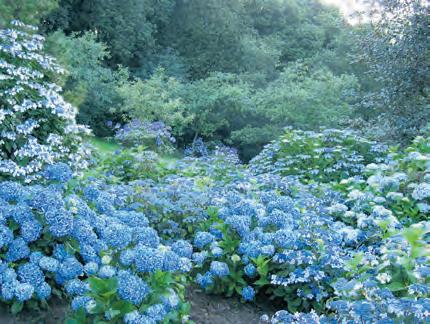
Whether you’re in the mood for borders brimming with herbaceous perennials or have in mind more minimal schemes of grasses, ferns and shrubs, keep Saturday 9th (9am to 5pm) and Sunday 10th September (10am-4pm) free to explore West Kington Nurseries’ Massive Plant Sale.
Normally a trade nursery, the seven-acre site will throw its gates open to all, with refreshments to revive the happy, plant hunting hordes. As well as presenting thousands of plants at keen prices, proceeds from catalogue sales will be donated to local charities.
Just follow the signs to West Kington from the A420 West Kington, Nr Chippenham, Wiltshire, SN14 7JQ 01249 782822 www.wknurseries.co.uk
Malvern Autumn Show, the UK’s leading harvest season celebration, will make a spectacular return to Three Counties Showground in Worcestershire from Friday, 22nd to Sunday, 24th September. The annual event attracts thousands of visitors from across the UK and is one of the largest celebrations of its kind in England.
Highlights of this year’s show include the RHS Flower Show, the CANNA UK Giant Vegetables Championship, the Harvest Pavilion (featuring the Grow to Show classes), the Plant and Bulb Arcades and Floral Marquee, plus talks from special guests, horticulturalists and authors.
For further programme details and to book tickets, go to https://www.malvernautumn.co.uk/
There’s an opportunity to discover the captivating Kelmscott Manor, the iconic country home of William Morris over the next few weeks. Immerse yourself in the charm of his house, gardens, and nearby River Thames. You can uncover the remarkable farm barns housing the tearoom and exquisite shop beyond the formal garden walls. Don’t miss the exclusive 2023 exhibition, ‘From Behind Closed Doors,’ showcasing rare treasures from the reserve collection. Exhibits include works by Pre-Raphaelite artists Dante Gabriel Rossetti and Edward Burne-Jones, and exquisite embroideries by Jane and May Morris.
It really is the chance to be inspired to unleash your creativity through the series of free drop-in family workshops led by visiting artists and skilled volunteers. Kelmscott Manor, Kelmscott, Lechlade GL7 3HJ For further information, visit www.kelmscottmanor.org.uk
Monkton Wyld Court is a Grade II listed 19th Century Neo-Gothic rectory in Dorset specialising in low impact living.
The house and grounds host a variety of educational courses, bed and breakfast and self-catering accommodation and boasts a large organic walled market garden and micro dairy which supplies much of the food for the workers and guests alike. A resident workers’ cooperative runs and maintains the court, with the help of volunteers.
They are seeking an experienced and dedicated gardener to maintain the beautiful organic walled garden. You would be responsible for the garden from seed to kitchen, as well as ensuring that the garden equipment and infrastructure is properly maintained. This position comes with accommodation, all meals, and a small weekly wage.

Two-week educational volunteering positions are also available throughout the year. From time to time there may be possibilities of longer term volunteering with a view to join the community. As a volunteer you will assist members of the Community in day to day tasks. The work is always varied and is spread over all areas of the business and charity from helping the kitchen prepare seasonal meals to shovelling manure on the farm, making compost in the garden, or making beds with the housekeeping team as well as communal duties such as cleaning, collecting firewood and cooking.
If you would like more information please call Stephen on 01297 560342 https://monktonwyldcourt.co.uk
Monkton Wyld Court, Elsdon’s Lane Bridport DT6 6DQ
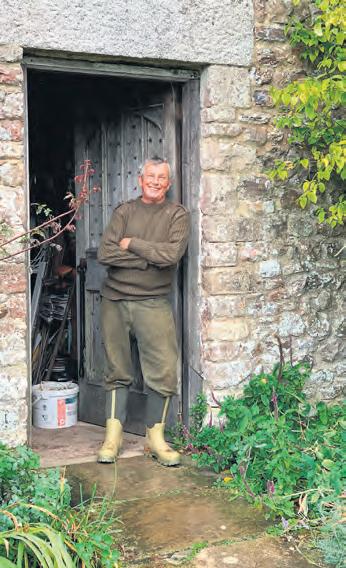
Cadhay continues to attract record numbers of garden visitors. The numbers increased significantly during the lockdowns and the news is spreading fast with many visitors buying season tickets so they can see how the gardens change over the summer. September has traditionally been a busy month with the collection of dahlias being a major feature in late Summer providing a riot of colour. With spring fed medieval ponds, the Cadhay gardens have enough water to remain vibrant and are well worth a visit. The gardener has been with Cadhay for 25 years and retires this winter so this will be his last season.
from 5th May to 29th September

Also August Bank Holiday weekend - Saturday, Sunday & Monday GARDENS: adult £5, child £1
Cadhay Gardens stay open on Friday afternoons until the end of September.
Cadhay, Ottery Saint Mary EX11 1QT


VISIT US: APRIL – OCTOBER



THURSDAYS, FRIDAYS & SATURDAYS 10.30AM – 5PM
Explore William Morris’s “Heaven on Earth” and view the iconic collection of artwork and objects owned and designed by the Father of the Arts & Crafts Movement. Discover why the Cotswold home became an inspiration for him and his family and explore the gardens, enjoy homemade food from our licensed tearoom and visit our gift shop. Take a stroll around the Manor’s enchanting gardens, barns, dovecote, stream and meadow. A variety of activities are available in our Learning Barn for all ages to enjoy including trails, jigsaws, craft making and much more.
For more information and to book tickets visit: www.kelmscottmanor.org.uk


Grade II listed 19th Century Neo-Gothic rectory in an idyllic location in Dorset.


Charity community for low impact and sustainable living, B&B, Events. Writers retreat. Large walled Organic garden and vegetarian kitchen.
Gardener wanted - experienced dedicated gardener required, in exchange for accommodation and all meals including a small weekly wage.
Volunteers wanted - Gardening, Maintenance, Grounds, House and Office - experience low impact living at its best. Please email volunteer@monktonwyldcourt.org or contact Stephen on 01297 560342 www.monktonwyldcourt.co.uk
Visit this timeless historic house, gardens and wildflower walks to a remote Atlantic cove
Visit our family home with its fascinating architecture, collections, displays and film exhibition. Fully reopen again after filming Series 5 of ‘Malory Towers’. Enjoy its beautiful Walled and Woodland gardens, Fernery, Bog garden and walks to the Atlantic Coast.
* Dogs welcome * Holiday Cottages *
* Homemade light lunches & cream teas *
* Hartland Quay 1 mile*
For more information and events see www.hartlandabbey.com Hartland, Nr. Bideford EX39 6DT 01237441496/234


Home to four National Plant Heritage collections, this private valley garden spans over 20-acres and showcases three stunning lakes, rare trees & shrubs, and colourful surprises throughout each season. Not only a haven for wildlife, the garden is also the perfect environment to explore and be inspired. Enjoy a day of inspirational and relaxation for the whole family.
Catch up over coffee and homemade cake or a cream tea in the picturesque Garden Tea Room or take a bit of Marwood magic home with you from our Walled Garden Nursery and Plant Sales.
Enquiries & Tea Room 01271 342528
Plant Sales & Nursery 01271 342577

Our postbag and emails are again bursting with queries and gardening problems from readers and we will try and get through and answer them all. If you want help with any specific gardening problem then email us at editorial@countrygardener.co.uk or write to us at Mount House, Halse, Taunton. Somerset TA4
3ADWhy has my greenhouse grapevine produced aerial roots for the first time?
 Jack Tindall Bridport
Jack Tindall Bridport
The key to this is understanding aerial roots normally found on tropical forest vines. A plant may have its head 15 or so feet above soil level and yet unlike a tree has little woody water conducting tissue and is faced with the problem of collecting water. In the tropical rain forest, the plant will be saturated so that is more logical than taking water from the air. The vine is trying to do the same thing, that is search for water. The roots are a dramatic plea for more moisture through the vine.
How do I change my small grass lawn to chamomile?
Kirsty Fletcher PainswickMy parsnips are looking weird and misshapen and black at the top and I fear may have powdery mildew. Can I salvage the crop canker in parsnips?
Barry Touge Plymouth
It is more likely this is canker where large black lesions form on mature parsnip roots, mostly on the shoulder or crown, that can spread to other sections of the root and in extreme cases, cover the entire root. There isn’t a lot you can do. If you spot the problem early enough you could cover the shoulder of the parsnip with soil throughout the growing season. Ideally you need to try plant resistant cultivars.

You must completely dig up the old lawn and make sure you have cleared away all the weeds. Next dig in plenty of organic material and in spring rake everything level, remove all the clods and add a general fertiliser. Plant cuttings of the variety ‘Treneague’ about 20cms apart. A word of warning is needed however as chamomile laws only really thrive if the soil is light and the lawn is in a sunny position.
I have tried to grow tomatoes out of doors every year but each time they have got bad blight. Are there any completely blight resistant varieties I can try.
 Andy Tremaine Midhurst
Andy Tremaine Midhurst
There are no fully blight resistant variants as the blight disease is open to mutations. Two varieties which are acknowledged to be less prone to becoming infected are F1 hybrids ‘ Crimson Crush’ and ‘Mountain Magic’. The latter is also immune to fruits cracking so has a double benefit.
Is there a golden rule about repotting houseplants? Some of my plants seem to look a bit unhealthy and have certainly grown in the last year or so.
Nic Porter MartockHouseplant owners have a tendency to repot their plants too often and disturb the delicate growing and flowering lifestyle. The key sign that repotting is necessary is when roots are growing through the bottom drainage holes or roots are pushing the plant up and out of the container. Another indicator is the plant is top heavy and wants to fall over. Often the soil dries out very quickly or has pulled away from the container sides and become hard and you are aware the plant is growing. Plants typically benefit from being repotted every 12 to 18 months, depending on how actively they are growing. Some slow growers, like cacti, can call the same pot home for years, but will just require a soil replenishment.
Will the seed of last year’s tomatoes be true to their variety and give me a proper crop?
Grahame
DevonportMost nursery bred ‘variety’ plants will revert back to their species parentage when grown from seeds. It can therefore be a bit of a lottery. Buying named seed is always the best and foolproof way to get the exact flavour or growth habit you are looking for.
I have ‘Gardeners Delight’ tomatoes planted in an unheated polytunnel in a mixture of soil and homemade compost. Everything was going well with the fruit growing until mid-July when the leaves dramatically started to curl, and the growth of the plant and the fruit seemed to have stopped and the lower leaves turned yellow. I have given them plenty of ventilation by leaving the doors open and have watered sensibly and regularly. I am baffled.
Michael Avery CliftonTomatoes are highly prone to any sort of environmental change and so it’s difficult to diagnose from a distance. Very high temperatures would normally be the reason for leaf curl but not the other symptoms. It could be that the homemade compost is the problem which may contain too much grass cuttings or perhaps traces of weedkiller can be too powerful and having an effect. There’s not a lot you can so this season -keep the temperature down, perhaps pick the fruit earlier than normal and hope you get sufficient fruit and perhaps next year use more balanced compost for something as delicate as tomatoes.
Why have my roses been reluctant to flower this summer? It’s been so sad and frustrating, and I would hate to think it is a permanent problem as my roses are such a joy to me.
Cath Ransome Dawlish
There are several reasons why roses suddenly stop flowering but the cause can be reduced to a fairly short list if we assume the plant is getting plenty of sunshine and has been pruned correctly. A bad fertilising regime is a common issue that leads to a rose plant not blooming. This is not a problem for roses only: most flowering plants can be affected with a wrong type of fertiliser.
Fertiliser full of nitrogen will make your plant healthy, and it will encourage the green leafy growth. However, it will diminish the growth of flowers and in many cases, too much nitrogen will result in it not blooming at all.

The solution to this issue is simple: do not use any fertiliser that is nitrogen-heavy. Failure to bloom could also be down to botrytis blight, when the buds may fail to open. Also, a plant suffering from powdery mildew will have buds forming, but they often won’t. Sensible specialist plant food should correct this.


Is there any obvious reason why my daffodils failed this year? I have a lovely collection with many varieties, and many were just ‘blind’ this spring. I care for them adding compost to the soil in the autumn.
David Lewis MineheadDaffodils struggle sometimes when they are too compacted or too old, but they shouldn’t all suddenly fail. The problem may be the compost. There is no real reason to add compost around the plants. It may be if you are using home grown compost it is not completely pure and contains disease. This autumn just make sure they don’t need dividing but let them get on with life.
I have tried twice now with tree peony seeds but each time they have failed to germinate and have done nothing which is very frustrating. I followed the instructions which included keeping the seeds in the fridge!
Paul Webb BurnhamYou are doing the right thing by consigning them to a fridge for several weeks, then moving them to a propagator. The problem with buying peony seeds is that unless they are relatively fresh they are sometimes reluctant to germinate at all and have a poor track record for not doing so. They are best gathered ripe from the plant and sown immediately in pots and then to a garden frame.
Why hasn’t my wisteria flowered this summer? The buds started to form and everything looked OK but then the flowers suddenly died.
Sam Bretton BristolThe flower buds on wisteria, like those of many spring-flowering plants, start to develop in late summer of the previous year. You can as you say see the buds clearly forming. Adverse conditions, particularly dry soil, occurring between July and September can cause the buds to abort, so firstly you need to make sure your plant has an adequate supply of water during this critical period. The pruning regime with wisteria needs also to be correct or the blooms will be affected. If the problem persists then it may be something more serious. You could for instance check for honey fungus by exposing a largish root and remove a sliver of bark. If white mould is visible beneath the bark then the problem is honey fungus which is extreme and there are not many controls if any for this.
My summer dahlias are toppling over in the wind, and I can’t support all of them. Is there an alternative if not this autumn, then next year?
Pammy Norton Ilminster
If you pinch out dahlias as young plants they become bushy rather than tall. When they are about 25 cms tall with four sets of leaves on strong stems then cut the main stems just above the top pair of leaves. The stems will then produce side shoots making the plant bushier and in fact wider and more stable. Pinching out delays flowering too so leave some shoots and remove others to prolong the display.

I have loved the recent damp, wet and windy weather. Can all our July’s please be like this.
It has meant I can ‘go missing’! I have not needed an excuse why I can’t cut the grass, cut back the brambles, tidy up the border, weed the vegetable patch.
“It’s too wet dear”.
And here comes the magic words.
“I’ll just do some work in the shed”.
And that’s it. I have spent more happy hours in my shed over the past four or five weeks than for a long, long time.
part of the infrastructure of a successful garden
I can’t say I’ve done a lot which would pass the criteria of time well spent in my wife’s eyes. I’ve sharpened a few tools, cleaned the rusting tree loppers, brushed down the benches, tidied up the empty pots – that sort of thing. But that is not what sheds are for. Sheds are escape vehicles. I remember my wife looking around my shed in the spring. It was like that prison warder checking Andy Dufresne’s cell in the Shawshank Redemption film . I stood to one side while the inspection went on in silence and bewilderment. That was in April and no visits since. So, it’s become as it should, a refuge. It is supported from some facts I gleaned the other week.
I understand 52 per-cent of gardens has a shed of some sort in this country.
Eleven per-cent of us spend more than five hours in a shed every week and that two percent of our partners resent it! One in four agreed that the shed was a refuge from the world.

When we moved into our new garden a few years ago we planted a stretch of bamboo to give us some cover from neighbours. That was clearly a wrong move. The bamboo has spread viciously and is sending roots out deep into the rest of the garden. I try hard to keep it down but I think it is reasonable to say it is out of control. Can I treat it with chemicals as I am desperate?
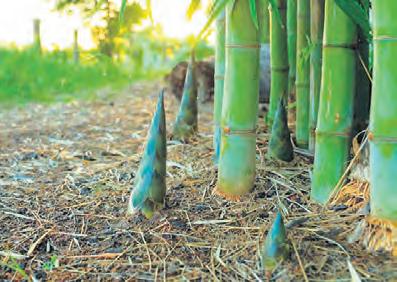
Roz Marchant Bridport
Before you revert to chemicals at least give a try to manually control things which is hard work but might succeed The first step in manual removal is to remove all above-ground bamboo growth using a hand saw. Chop down the bamboo poles as close to the ground as possible. Dry out the bamboo poles in the sun and save them for different projects. After clearing the bamboo poles, dig out the rhizomes, working your way from the outer portion of the root system to the inner section. The outer areas of the roots are less intertwined and strong, making removal easier. If you’re having trouble removing the roots, loosen the soil with a spade or shovel. Bamboo rhizomes mainly grow horizontally, but the root system can grow as deep as three feet.
Here’s something I’d like to think more about, given some time - 16 per-cent have put in a television and 27 per-cent a bar fridge in their shed.
Who remembers that BBC TV family sitcom back in the 70’ s was it, when the man of the house retired to his shed whenever he could where he kept a box of sherry alongside his deckchair to dispense for visiting mates before putting the world to rights?
There’s however a serious point in my letter to you.


Most of the time sheds are where you store stuff. They are a repository for garden tools, the lawn mower, a bike or two, some gardening chemicals you vaguely know how to administer and a wide selection of cobwebs and strange insects. But actually the kind of activities which go on in a garden shed are far more therapeutic than practical.
Sheds are an important part of the infrastructure of a successful garden. We can joke about how men escape and seek refuge in them but they mean something which a greenhouse can’t - a place which represents the garden as a great place to like to be in and part of.
I read the other day that in California there’s an organisation formed to support and administer the wellbeing and health of men through building a sustainable community of Men’s Sheds owners.
I wonder if North Devon is ready for this?
Alec Rowley loves his north Devon shed. It’s a refuge but it’s also part of the reason his whole garden works so well
Sheds are an important
Long before dinosaurs walked the earth, there were dragonflies in the sky. Now when we spy them in our gardens they retain that mythical, magical quality.
Maybe that’s because they were some of the first winged insects to evolve, around 300 million years ago. Back then oxygen levels were much higher, allowing giant dragonflies to evolve, with wingspans like eagles.
Dragonflies and damselflies are part of the Odonata order, meaning ‘toothed ones’. They are fearsome predators of flying insects like gnats, mosquitos and other small bugs.
Don’t worry - they don’t bite us. They’re completely harmless, and helpful for humans, as they hunt the pesky insects that bother us.
There are 57 species of Odonata in the UK: 36 dragonflies (Anisoptera) and 21 damselflies (Zygoptera).

So often during the summer, we see iridescent dragonflies and damselflies flitting between plants and water on river paths or lakeside walks, but how do we tempt them into our gardens?
There are several reasons why dragonflies might congregate in one area in a garden versus a similar area nearby, but in nearly every case there is an abundance of prey species present in the area containing the swarm. Dragonfly swarms will form where other insects are swarming. They are mostly found close to the pond – near ox-eye daisy, primula, loosestrife and hemp agrimony.
Dragonflies like clear water, not overly cluttered with plants, so make sure you keep the most vigorous plants under control. Keep the water level up, particularly in warm weather.
Dragonflies and damselflies all have superb all-round vision for hunting their flying insect prey, but are easily spooked – stand motionless and you will often see them return to the same stem perch or resume their regular patrol up and down the hedgerow, river or stream bank.
They have a lot of folk names which imply what they do, such as ‘Horsestinger’, but they don’t use their egglaying tube for stinging.
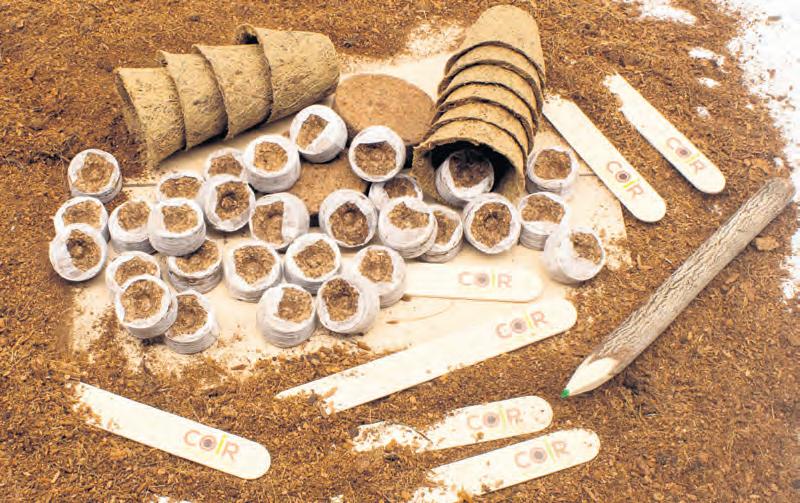
Gardening can boost self-esteem, confidence, and independent thought in children, while it is also a great way to spend time together with family and friends
Dragonflies do bite, and they will bite humans, but only if you catch one and it’s trying to escape or defend itself. And only the largest dragonflies will be able to break your skin anyway.
Dragonflies have large, powerful jaws and are ferocious airborne predators, catching flying prey in a basket-like gantry of legs and dispatching it with a single crunch. Their large size, bright colours and rapacious behaviour can make them seem threatening, hence nicknames such as devil’s darning needle and horse-stinger.
Dragonflies don’t sting, because they physically can’t.
Midafternoons are often most productive for them, as the dragonflies are most active during the warmest part of the day. In the morning dragonflies can often be found perched on reeds and grass stalks at the water’s edge.
In addition to their striking colour and dazzling aerial displays, dragonflies make our outdoor experience more enjoyable by reducing those pesky mosquitoes and gnats. Each dragonfly eats 30 to hundreds of gnats a day. However, seeing one in person can be somewhat rare. But not as rare as you may think. The most common dragonfly colours are blue and green. But most dragonflies are a combination of colours, including blue, green, red, brown, black, and yellow.
Dragonfly vision is thought to be like slow motion for humans. Dragonflies see faster than we do; they see around 200 images per second. Dragonfly can see in all 360 degrees around it and nearly 80 percent of the insect’s brain is dedicated to its sight.
There’s a myth they only live for one day. At the shortest, a dragonfly’s natural life-cycle from egg to death of adult is about six months. Some of the larger dragonflies take six or seven years! Most of this time is spent in the larval form, beneath the water surface, catching other invertebrates.
Dragonflies are often seen as symbols of change and new beginnings, which can be reassuring to someone who is grieving.
Getting children involved in gardening from a young age can have tremendous positive effects.
Not only does gardening help children improve their overall health and wellbeing, but it also helps them develop a variety of useful life skills and gain invaluable knowledge.
Growing fruits and vegetables can help encourage healthy eating patterns with children better understanding how food is grown, while also learning more about the life cycle of a plant. At the same time, tending to plants will also help them learn patience, resilience, and commitment, among other skills.
Gardening is also seen as useful for boosting self-esteem, confidence, and independent thought, while it is also a great way to spend some time together with family and friends. CoirProducts.co.uk of Salike Limited, have a selection of kids gardening bundles that are ethically produced and sourced, sustainable, and vegan-certified. The natural and biodegradable products are ideal to get children started on their gardening journey, but also perfect for eco-friendly and sustainable growing.
Made from the natural fibrous material extracted from the husk of the coconut, they are environmentally sustainable and safe for plants and the planet.
Having the largest portfolio of coir-based products available in the UK, the company introduced a specially curated coir bundles for kids in the early days. With three distinct bundles to choose from, My Kids Playground, My Little Gardener, and My Secret Hobby, the children’s pack includes some of signature products, Coir Pots, CoirCoins, and Coir Potting Mix (Coir Discs).
Each pack also includes a fun children’s activities book.
The biodegradable coir pots are the perfect alternative to plastic pots with the smallersized pots ideal for kids to start off growing their favourite seeds. Coir allows roots to grow through the pot, which means, there is no transplanting shock when repositioning the plant later. As the plant grows bigger, children can reposition the plant with the pot itself on the ground or in a bigger pot. In addition, the Salike® CoirCoins are unique in the market as they come with a fully biodegradable cover made of polymers of corn starch. Ideal for sowing, the CoirCoins are known for their high germination rates. And, if you are looking to introduce your children to a peat-free option, our Salike® coir discs are ideal. Add water and let the mix expand, before placing your seeds or plants. As coir biodegrades, they become into the soil over time.
What’s more is that you don’t need too much space to garden. There are a variety of plants that can be grown indoors where space is limited, and coir products work just as well in indoor settings.
They also retain water well, have excellent air porosity, and facilitate drainage, helping plants grow stronger and healthier roots.
Website/shop: www.coir products.co.uk
Email: hello@coirproducts.co.uk
Eco friendly products such as coir set the right starting point for children and gardeningContainer gardening is again going through a boom in popularity, not just for small gardens but for gardeners who want plants and vegetables closer to their back door. They provide an easy way to brighten up small spaces and create focal points in larger areas. We look at how to ensure your containers are a success.
Pairing up pots and plants in pleasing compositions is quite simply a wonderful way to garden.
You can even grow perennials, grasses, and dwarf evergreen shrubs in pots to provide year-round interest.
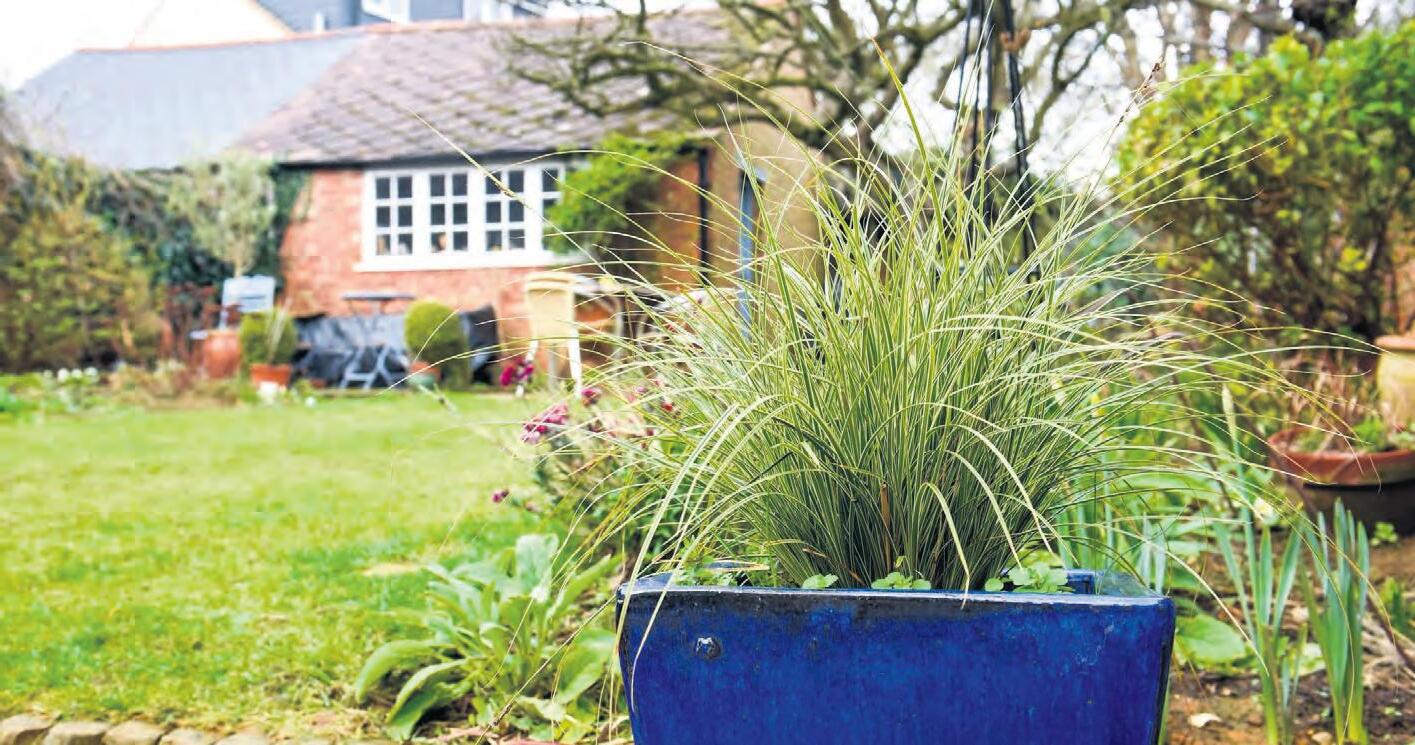
Containers also let you skip the major digging and weed-pulling of border gardening and fast-forward to the fun: designing, planting, and enjoying. You get just enough dirt under your fingernails to feel like you’ve accomplished something. Best of all, potted gardens are close-up delights. They invite you to slow down, notice the details, and savour the scents.
Containers come into their own when soil space is limited, such as in small gardens and on patios, doorsteps and balconies. In some outdoor spaces, a container garden may be the only option for growing plants. You can move them around more easily than plants growing in the ground, and their limited size means they’re great for beginners growing small quantities of veg or herbs, for example.
Almost any type of plant can be grown in a container, from colourful seasonal bedding to more permanent shrubs, climbers and herbaceous varieties.
Perennials are any plant living for at least three years. The term is also commonly used for herbaceous perennials which grow for many years perennials and even small trees. Clipped topiary in a pot makes a great focal point and adds a formal flourish to a front doorstep. Many fruits and vegetables can be successful in pots too, as can some roses. Drought-tolerant plants, such as Mediterranean herbs, are ideal for planting in pots, especially in our warming climate.
Just bear in mind that plants in containers need more watering and feeding than those growing in the ground, as they have only a small amount of compost to sustain them. They are also more susceptible to cold, as the roots are more exposed than those buried deep in the earth, so may need additional protection in winter. Container plants are also prone to waterlogging in winter, so make sure the drainage is good, especially during the wetter seasons.
Dorset gardener Ralph Denning has been growing vegetables in containers for over 20 years and has never found limitations on space a problem.
I grew up only knowing a small town centre garden and my parents worked hard to grow things in restricted spaces. They became masters at growing in containers.
From the chives in the big garden pots, to the little pots of mint and coriander sitting on the kitchen windowsill, these experiences were the first to pique my interest in gardening.
As more and more people are looking to branch out in their experimentation with edible crops, it’s becoming very clear that green finger fever isn’t just confined to the countryside.
Urban agriculture is really taking off, with people growing food in the most improbable places: rooftops, balconies, windowsills, and every other little nook and cranny that is available to them.
Growing food in pots is the easiest way to do this. Able to fit perfectly in little corners, container growing offers the perfect way for people with limited space to get into edible gardening.
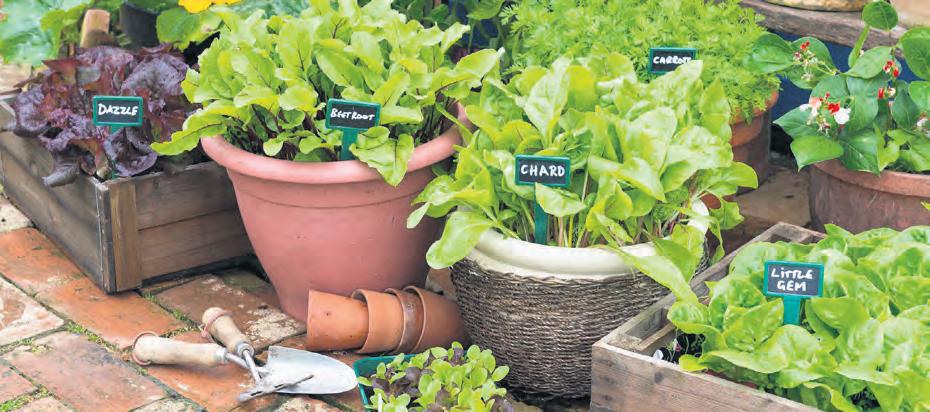
Pots are obviously not just for town dwellers with confined space– they can also offer a valuable alternative if your soil is too poor to grow in and can often be much more accessible to growers with physical differences and disabilities.
If you're growing a tree or shrub in a large container, you should replenish the compost every year or two. The ideal time to do this is between February and May. Doing so will improve the compost structure and provide a fresh supply of nutrients, which can be lost quickly in pots and containers.
Gravel or stones can also be at the bottom of a planter, but only to thinly cover and protect the drainage holes and not as a thick solid layer. A thick layer can reduce the space for plant roots and potentially raise the water table in the pot, which can increase the saturation of the soil around plant roots.
There are a couple rules of thumb to help you choose the right size pot for your plants: for a mixture of plants, look for containers at least 12 inches wide. Annuals usually need at least eight inches of soil depth, while grasses and shrubs may need two or three times that amount. The ideal container has straight sides or ones that flare out at the top for easy access.
So, what kind of vegetables are on offer for container growers, and which will provide the best yields when grown in a small space? Here, we look at the top vegetable varieties to grow in pots.
BEANS
BEETS
CHARD
CHILLI PEPPERS
KALE
LETTUCE
ONIONS
RADISHES
SPINACH
SWEET PEPPERS
TOMATOES
Aesthetics aside, there are also practical concerns when picking pots.
If you’ll be placing pots on a deck , a patio or a rooftop, look for lightweight materials, such as metal or composite. These and some glazed ¬ceramic pots also have the advantage of being nonporous, so they keep soil moist. Porous unglazed terra-cotta gets a wonderful patina over time but allows soil to dry out more quickly.
Any pot needs drainage holes so roots don’t get waterlogged; these should be covered with pottery shards, stones, or a small piece of screening to keep soil from migrating out.
If containers sit on a wooden deck, consider using pot feet or a plant stand to elevate them so that the decking doesn’t stay wet, which will lead to rot.
An old tin bath is the ideal size for a miniature herb gardenmix the herbs with edible or medicinal plants for an even more attractive look. Find out how to make this herb container using red-veined sorrel, basil, salad burnet, calendula and pelargonium.

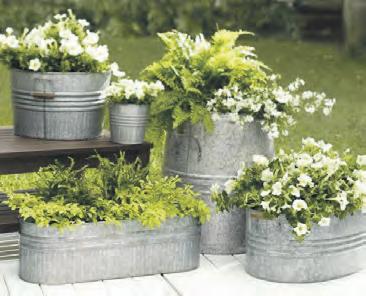
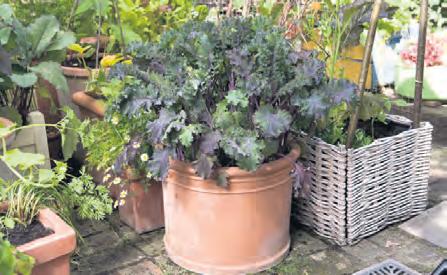
WOODEN BOX
Wine or wooden boxes make the ideal container for herbs and cutand-come-again salads. Alternatively, fill it with alpine plants and succulents to make an attractive, year-round display.

METAL TROUGH
Old metal farm troughs are now highly sought after by gardeners. They are ideal for all manner of plants, including herbs, strawberries, tomatoes and more. Be sure to drill holes in the bottom to ensure good drainage.
BELFAST SINK
As a rule, hybrid and dwarf varieties of plants are usually a good bet in pots, as they require less space to grow. Summer wouldn’t be complete, without the taste of juicy tomatoes. And the good news is they’re easy to grow in pots and growing bags, if you have a sunny spot. It’s a little late to sow tomato seeds now, but you can buy tomato plug plants online now, and pot them up. Then, after all risk of frost is past, you can plant them out into a growing bag or any large container you have.
If you only have space for a small pot or windowbox, there’s still plenty you can grow. You can grow lettuce and salad leaves in small, shallow pots, as they don’t need a deep root run. Sow seeds now and you can be harvesting fresh, baby salad leaves in just weeks – ideal if you’re impatient or gardening with kids. They’ll do best in a slightly shady spot.
Carrots need really free-draining soil, that’s free of stones. Growing carrots in a pot is an easy way to give them this. If you’re growing traditional, long carrots, then make sure you use a deep container. If you only have a shallow container or windowbox, you can still grow carrots – just choose a short variety, such as ‘Parmex’ or ‘Paris Market –Atlas’.
A Belfast sink is a beautiful choice for all manner of plants - stick to one type for maximum effect, such as alpines, succulents, herbs, carnivorous plants. Or try a beautiful acer and bleeding heart display, perfect for a semi-shaded spot.
METAL BUCKET
A metal bucket makes an attractive (and portable) container for herbs or ornamental plants. Be sure to add newspaper or bubble wrap around the insides to prevent the compost from getting too hot.

HESSIAN SACKS
Hessian sacks give an organic, natural look and naturally provide good drainage (you might want to stand the sack on something to stop it staining your paving). They're ideal for growing potatoes, baby veg, strawberries and even herbs.
TERRACOTTA/CLAY
These look attractive, but unglazed pots are porous so dry out more quickly than other materials. Terracotta is also prone to cracking in winter, so choose frost-proof pots, rather than just frost-resistant. High-quality pots can be expensive, but if well looked after they can last for many years.
Check that your container drains well. It must have one or two drainage holes in the base to allow excess water to escape. Keep the holes from getting blocked up with compost by adding a couple of inches of gravel as the base of the container. Avoid using other materials which can block the holes.
Avoid using garden soil in containers - it won’t drain well enough and may contain pests.
Instead use multi peat-free compost for seasonal plantings and a mixture of John Innes’
No 2 potting compost for plants that you plan to keep in a container for more than a year. Give plants a thorough watering both before and after planting.
Position plants at the same depth they were growing at previously. With shrubs and trees ensure the soil mark on the stem is level with the surface of the compost.
Leave a gap between the surface of the compost and the rim to allow for watering.
Raise the pot off the ground on bricks or ‘pot feet’ to ensure water drains out easily, especially in winter. This will prolong the life of container plants made from perishable material such as wood.
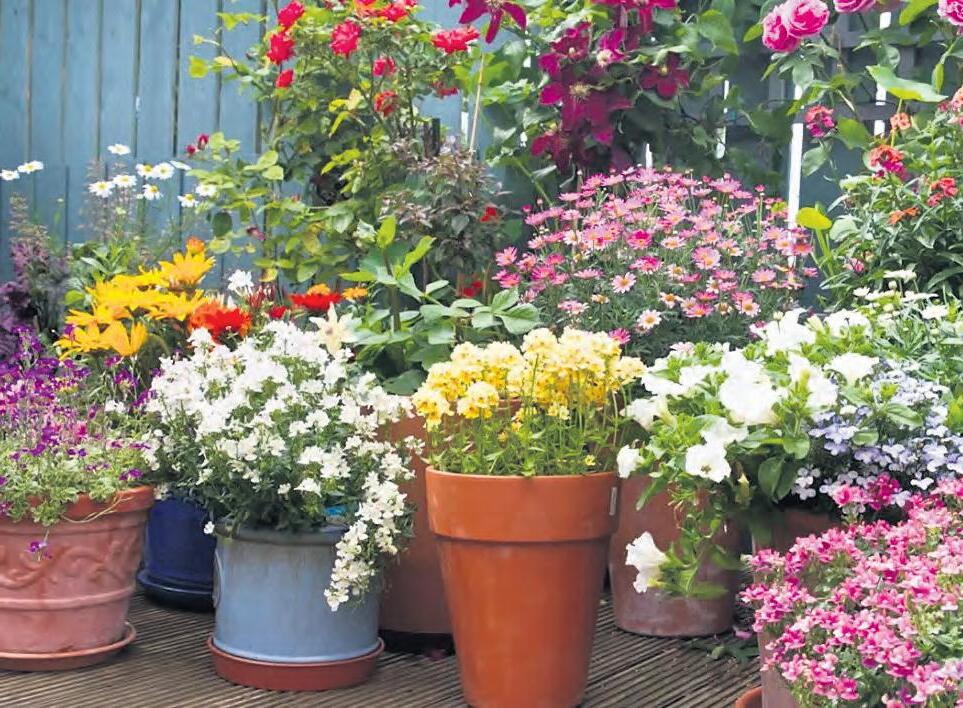
Choose whether to add a mulch.
Keep long term plants thriving by replacing the top 5cms of compost every spring. Adding a good handful of blood fish and bonemeal will also give them a boost.
Menopause occurs when a woman’s ovaries no longer produce eggs. The stages of menopause can last anywhere from a few months to a few years, depending on the individual. During this time, women experience unique physical and hormonal changes that can cause several unpleasant symptoms, such as hot flashes, insomnia, and mood swings. Gardening has long been seen as a pastime to engage in when retreating from the hustle and bustle of everyday life.
But in recent years, gardening has taken on an even greater significance for women experiencing menopause. This time can present a range of challenges; physical, mental, and emotional. Fortunately, gardening has been found to have a profoundly beneficial impact for women going through this transition.
Gardening can offer an effective form of relief from the common challenges of menopause. It provides women with an outlet to express their emotions, cultivate healthy habits, and ease stress.
Specifically, there are four main ways in which gardening aids in managing menopause symptoms:
Firstly, gardening is an enjoyable form of physical activity. It provides an opportunity to engage in light exercises, such as digging, raking, and planting, which can help maintain strong muscles and bones, and improve overall health. "Many turn to plants to reduce stress levels and improve overall wellbeing." Gardening involves physical movements like resistance exercises, aerobic training, stretching, and relaxation, which can prevent weight gain and chronic diseases.
Gardening plays a significant role in preventing osteoporosis and promoting bone health. The physical movement involved in gardening strengthens cartilage tissue and bones while exposing women to sunlight for adequate vitamin D absorption.
Second, gardening provides an opportunity for women to connect with nature. This connection can provide an increased sense of peace and security which may ease the distress of menopause-related symptoms. Gardening serves as a therapeutic outlet that reduces psychological stress.
Gardening promotes mindfulness and being present, diverting negative thoughts and reducing stress.
Connecting with nature improves mood and reduces anxiety and depression symptoms.
Third, gardening gives women the chance to immerse themselves in a positive activity. Nurturing plants and cultivating a garden is something they can take pride in and reap the rewards from. This can have a profound effect on reducing stress and anxiety, which can be major triggers for menopause-related symptoms. Cultivating a garden provides a sense of purpose and accomplishment, fostering overall well-being.
Finally, gardening can also be a social activity, creating a support system and fostering a sense of belonging. Incorporating gratitude into gardening practices enhances positive emotions and endorphin release. Overall, gardening offers a holistic approach that enhances mental health through relaxation, connection with nature, mindfulness, social engagement, gratitude, and purposeful engagement.
The term “stress” has become a ubiquitous part of our daily lives, and many turn to plants to reduce stress levels and improve their overall wellbeing.
Studies have demonstrated that being close to nature can have a calming and soothing effect, and there are some plant varieties which can provide an even more pronounced stress-relieving effect.
5. Spider Plant: Easy to grow and resilient, spider plants purify the air by eliminating harmful pollutants.
6. Jasmine: With its soothing fragrance, jasmine reduces anxiety levels and promotes a sense of well-being.
7. English Ivy is a good plant for relieving stress because it is an air-purifying plant. In addition to producing oxygen and filtering airborne particles, such as formaldehyde and benzene, English Ivy is lowmaintenance and a hearty plant which does well in most types of soil and lighting. It also provides a beautiful, stress-reducing visual with its cascading vines and bright green hues.
8. Peace Lily is another excellent plant for stress relief. This flower is known for its spathiphyllum blooms, and even the presence of this soft-petaled flower can bring about a sense of tranquillity in the home. While the Peace Lily does require more care than the English Ivy, it still makes an attractive, low-maintenance plant for those hoping to reduce their stress levels.
Incorporating these plants into your living or working space can create a serene ambiance and contribute to overall well-being.
In summary, although menopause can be a difficult time for many women, gardening can provide an effective form of relief from the challenges associated with this transition.
1. Lavender: Known for its relaxing properties, lavender can reduce anxiety and improve sleep quality.
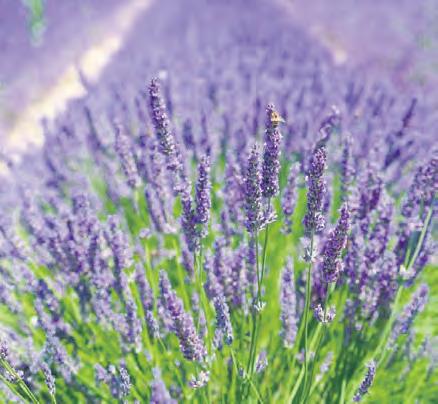
2. Chamomile: The calming effects of chamomile can be enjoyed through soothing tea, helping to reduce anxiety and promote relaxation.
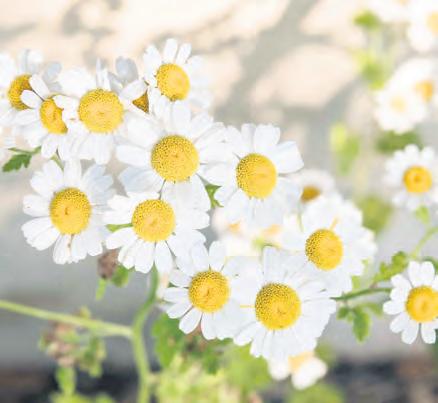
3. Aloe Vera: Apart from being aesthetically pleasing, aloe vera also purifies the air, providing better sleep quality and lower stress levels.

4. Snake Plant: These low-maintenance plants are excellent air purifiers, great at removing toxins from the environment.
About the Marion Gluck Clinic
www.mariongluckclinic.com
The Marion Gluck Clinic is the UK's leading medical clinic that pioneered the use of bioidentical hormones to treat menopause, perimenopause and other hormone related issues. Headed up by Dr. Marion Gluck herself, the clinic uses her method of bioidentical hormonal treatment to rebalance hormones to improve wellbeing, quality of life and to slow down ageing.

WHEN IT COMES TO CHOOSING PLANTS FOR ANXIETY AND STRESS RELIEF, SEVERAL OPTIONS ARE AVAILABLE. HERE ARE SOME TOP CHOICES:
DR FIONA MACRAE, A SPECIALIST IN INTEGRATIVE WOMEN'S HEALTH AND BIOIDENTICAL HORMONE BALANCING, EXPLAINS HOW GARDENING OFFERS GENUINE RELIEF IN PAINFUL, STRESSFUL TIMES
September is generally a cooler, gustier month than August and the days are noticeably shorter. While there’s not as much to do in the ornamental garden at this time of the year, if you have a fruit or vegetable patch, you’ll be busy reaping the rewards of harvest. It’s also time to get out and start planting spring-flowering bulbs for next year and you can collect seeds for next summer’s colour too. Make the most of the remaining warmth while you can!
September is not all toil, though. It’s a time to take note and plan for next year, whether that’s visiting an inspirational nursery with a great display garden or scrutinising your own garden for gaps. Take photos on your phone, make notes and mark up the bits which haven’t gone as well as expected. Later in autumn, when you are digging up and dividing, you’ll have an excellent visual reference of what to move and what gaps need to be plugged. Meanwhile, here are some jobs to be getting on with.
1September is the ideal time to be planting hardy spring-flowering bulbs such as narcissus (daffodil), hyacinth and crocus. These bulbs will do best in a warm, sunny spot and they all love good drainage.
If you’re planting them in a bed or border, dig a hole about four times the depth of the bulb. Put a layer of sand and grit in the bottom of the hole to aid drainage.
Cover this with a little compost, then plant the bulbs under about two bulb’s worth of depth of soil.
Try to bunch six to ten bulbs together in one spot, placed one bulb’s width apart, or line a path with them for an impressive display.
Summer-flowering herbaceous perennials can be lifted and divided in September when they’ve finished flowering and the soil is still warm enough to aid new root development.
In fact, most perennials need to be divided every two to three years, otherwise they get too big for the space they’re in and become congested – it will also increase plant stock for free!
Gently dig out the plant with a fork to not sever plant roots. Once the plant is out, divide it in a way suitable to its type.
Small fibrous-rooted plants like hostas, can be gently teased into two with your fingers. 3


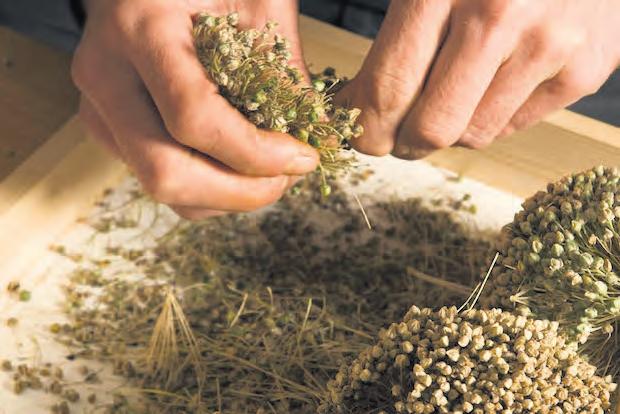
Save seeds to sow next year (remembering to label the bags) and remove seed heads of any nuisance plants, but in general you want to leave as many seedheads as you can for wildlife.
September is a good time for planting hedges. The soil is still warm and there is usually plenty of rain. It’s traditional to plant a mixed native hedge in the spring, but there’s been success with autumn planting. Evergreen hedging can be planted now, too, but don’t leave this any later than October as plants may be damaged by frost.
Garlic and overwintering onions are planted out from now till the end of October but get your order in as soon as possible or you will be picking over the spoils. Get used to regularly overwintering onions; try Japanese ‘Shensyu Yellow’, and ‘Radar’ for red onions. Garlic does best planted out as early as you can; ‘Solent Wight’ and ‘Cristo’ are both reliable and hardy. Onions need to be spaced 20cm apart each way; garlic is best at 18cm each way. Choose your sunniest spot.
Pull leaves away from tomato trusses allowing all the sunlight to reach ripening fruits. Outdoor tomatoes are in danger of blackening overnight without protection, but experiment with cutting them down from their supports and laying them on fleece before you cover them with a polythene tunnel, so the fruit can continue to grow and ripen for a few more weeks. It is possible this way to enjoy at least three more weeks from our outdoor vines. You can ripen tomatoes by covering them with a polythene tunnel.
To give box hedges a trim before the winter. If you leave it much later the soft new growth pruning encourages might get caught by the first frosts.
To sow new grass seed. Capitalise on wet weather and warm soil and repair small threadbare patches by scattering on lawn seed.

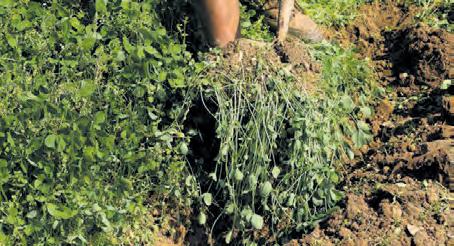
When you think you’ve harvested your last potatoes, carefully dig over the veg bed, collect those that were still lurking under the surface, and then dig over ready to plant some green manures. These green manures are useful in many ways; they protect the soil from erosion over winter, reducing the potential of any leaching of mineral and nutrients, and protect soil structure, as well as boosting nutrients when dug into the soil. They also provide a green carpet that helps provide shelter for beneficial insects through the winter, such as ground beetle, and if you leave a patch to flower, they are loved by pollinators – Phacelia tanacetifolia for example, is one of the best nectar sources for the honeybee, bumble bee and hoverfly.
To lift potatoes. They all need to be dug by the end of the month otherwise they’ll be slugged to death and become inedible. Choose a dry day and let them dry out on the soil before bagging only those without any blemishes or fork damage. Store somewhere dark, dry and frost-free.


To put in orders for spring bulbs. Think ahead and ensure you have bulbs that will flower in every month giving you a succession of colour.
To order bulbs for forcing indoors such as hyacinth and paperwhite narcissus.
RHS Chelsea Gold Medal Winners
RHS Chelsea Gold Medal Winners
OUR ONLINE SHOP IS OPEN FOR BUSINESS AS USUAL
LAST FEW OPEN DAYS:
Sat 9th - Sun 10th Sept
Sat 30th Sept - Sun 1st Oct
*10AM-4PM ALL DAYS
• Now is a great time to get your gardens ready to add some Glorious Heuchera technicolour
• We have a the best range of Heuchera’s in the UK including many of our own introductions

• Heuchera’s for the garden and for containers and baskets
• Heuchera’s for Fabulous foliage and some for Fantastic flowers
Heuchera ‘Wedding Bells’
The Nursery Open Dates for 2023 For more information on the Open days please visit our website www.heucheraholics.co.uk
Find us on Facebook, Instagram and Twitter

Boldre Nurseries, Southampton Road, Lymington, Hants SO41 8ND TEL: 07973 291062 / 01590 670581
www.heucheraholics.co.uk
BUY ONLINE ANYTIME!
THE RHODODENDRON & AZALEA CENTRE
A FAMILY RUN NURSERY FOR THE EXPERIENCED AND NOVICE GARDENER
Large Selection of Perennials (Cottage Garden Plants),Trees, Shrubs, Herbs, Alpines and Vegetable Plants. Plus large selection of Ornamental Trees, Fruit Trees and Climbers.


GREAT OFFERS ON COMPOST
(all compost we supply we use ourselves, so we can recommend it)
VIEW OVER
400

VARIETIES OF DAHLIAS
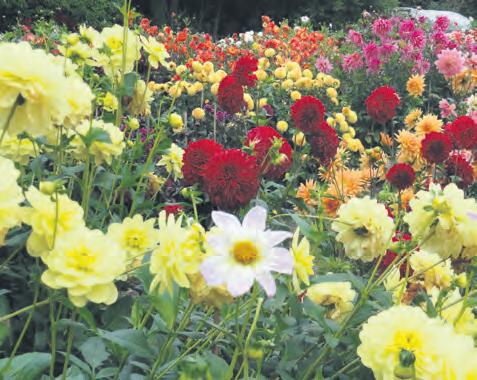
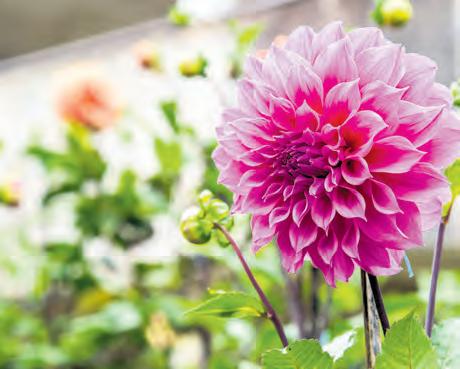
IN OUR FIELD WITH GRASS PATHWAYS FROM NOW UNTIL FIRST FROSTS
To see the collection at its best, visit late August/early September
GARDEN & LOG SUPPLIES
DELIVERED ALL AREAS
DUMPY BAGS AVAILABLE
MUSHROOM COMPOST
10 40L sacks only £28.50 a load
EVERYTHING FORASMALLWATER FEATURETOA LARGEKOIPOND
Visitors Welcome Mon-Fri 9.00am-4.00pm all year round Sat 10.00am-4.00pm Apr-May
WE ALSO GROW GINGKO BILOBA, DWARF GRAFTED
PINES AND HYDRANGEAS
Koirin, Crossroads Nursery, Woodlands, Wimborne, Verwood Road, Dorset BH21 8LN (Near Verwood) Mail Order Available Tel: 01202 824629 enquiries@azaleacentre.co.uk
www.azaleacentre.co.uk
For Autuum colour IN ABUNDANCE
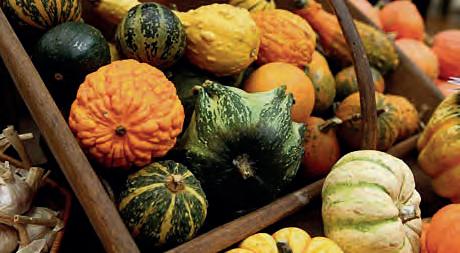
garden news, events & advice - don't miss COUNTRY GARDENER
Cedar Nursery, Sandy Lane, Romsey SO51 0PD Tel: 01794 367511
Web: www.southernwaterscapes.net

Email: swac.1@virginmedia.com
10% OFF PLANTS WITH THIS ADVERT
• Extensive range of quality aquatic and bog plants
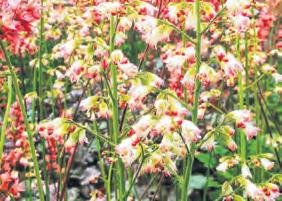
• Large range of cold water fish from goldfish to high grade Japanese Koi

• Expert technical advice on pumps, filters, water quality and fish health
• Everything for building and maintaining your pond • Experienced and knowledgeable staff
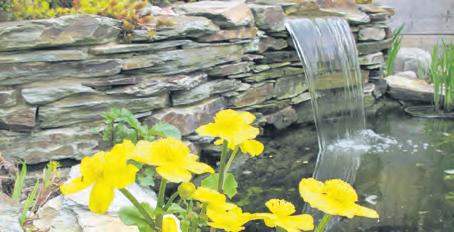
The historic gardens at Villandry in the Loire Valley have been now recognised as one of the finest in Europe and winning acclaim for those hol idaying in that part of France. Country Gardener visited the gardens to join in the praise.

There are, incredibly, around 45,000 chateaux in France. But few have gardens as spectacular as Chateau de Villandry in the Loire Valley.
The imposing chateau, founded in the 12th century, was once a medieval fortress used for the talks between Philip II and Richard the Lionheart which would eventually end the war between France and England.
In 1532 Villandry was bought by Jean de Breton. De Breton modernised the property and it remained in his family for generations and was further developed by Louis XV’s ambassador Michel-Ange de Castellane.
In the early 1800s the property was confiscated during the French Revolution and bought by Emperor Napoleon for his brother but fell into a state of disrepair under his tenure.
In 1906 Joachim Carvallo, a doctor and researcher from Spain, bought the property, financed by his wife Ann Coleman - a scientist and American heiress to a wealthy steelmaking family.
At this time Villandry was a shadow of its former glory - the grounds abandoned and the chateaux in threat of being demolished.
But Carvallo devoted the rest of his life to the restoration of the chateau and its grounds, and two generations later their great-grandson Henri Carvallo manages the estate. Nowadays it is one of the most visited chateaux in France, but it is its spectacular formal gardens which are the draw for most visitors.
The stunning gardens - an exemplary example of formal garden design - are today a far cry from the overgrown state they were in when Carvallo set about their restoration.
It is said that when he first walked around the estate, he could sense the original Renaissance terraces and fountains underground, and so the restoration of Villandry not only included the chateau, and restoring the moat, but also a total restoration of the nine-acre gardens.
They are now divided into six separate gardens, including a Water Garden, an Ornamental Garden and Kitchen Garden; laid out over four terraces, interspersed with ponds and fountains.
Closest to the chateau is the first salon of the Ornamental Garden - consisting of the Love Garden, and beyond it the Garden of the Crosses, both of which feature geometric box hedge structures filled with flowers. The Love Garden depicts four types of love: Tender, Passionate, Flighty and Tragic. The hedges of the Garden of the Crosses form a Maltese cross, a Languedoc cross, a Basque cross and a fleur-de-lys which lines the moat.
Lying the other side of this water channel is the second salon of the Ornamental Garden - the Music Garden.
The design of these box hedges and yews in this garden represent lyres, harps and musical notes.
At the rear of the ornamental garden is the Water Garden - a sunken garden - bordered with steep grassy banks and featuring an ornamental pond in the shape of a Louis XV mirror. With its network of perpendicular avenues and four secondary ornamental ponds, this area is a calm space, different in character to the structured and stylised planting and design of the other gardens.
But it is the Kitchen Garden which is the most impressive of all and the one which Carvallo paid the most attention to when restoring the estate. Studying archaeological digs, old maps, plans and literary sources, Carvallo
learned how the gardens would have been in the 16th century and reconstructed it accordingly.
Laid out in a Renaissance style it is made up of nine identically-sized squares each with a different geometric motif of vegetables and flowers, and interspersed with many rose bushes.
Each patch is planted to precision with alternatingcoloured vegetables and leaves, so from a distance it looks like a multicoloured chessboard. Two plantings are carried out each year - in spring and in summer - during which the vegetable layout is changed not just for colour and design but also to avoid exhausting the soil.
The design reflects both the French monastic traditionwhere monks included crosses in garden design and rose bushes decorated religious statues - and Renaissance Italy where gardens which were laid out with many decorative elements including fountains, arbours and flower beds to make it an ornamental kitchen garden. This leads into the herb garden, with its medicinal and culinary plants, then into a maze.
After World War II, the lack of gardeners and visitors meant that the gardens lost their appeal, but Carvallo’s grandson, and subsequently his great-grandson, brought them back to their former glory, this time with the addition of the Sun Garden - an interpretation of a 1930s plan that had never come to fruition.
Moving with the times the gardens at Villandry are now organic and prove a home for wildlife - housing four bee hives and having been the first chateau to be included in the League for the Protection of Birds.
The Chateau de Villandry was one of the first private gardens to open to the public and nowadays is truly is one of the the ‘must-see’ gardens of Europe.
The subscription costs just £20 and guarantees a 10 times a year magazine packed with information , gardening advice, local events.
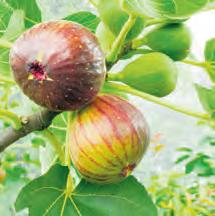
You can select from one of our five editions of the magazine which is relevant to where you live.
Subscribing
I would like to subscribe to Country Gardener for the next ten issues for £20:



This is a subscription just for me *
This is a gift (send next available issue) *
Please choose your region by ticking the box: Cotswolds * Devon * Dorset * Somerset * Hampshire *
Your details: Title
Details of gift recipient:
ACCOMMODATION
Churchwood Valley
Secluded cosy cabins & lodges in wooded valley running down to Wembury Bay & SW Coastal Path

Plymouth, Dartmoor & lovely South Devon Villages & Towns in easy reach. Pets
Welcome. Forest School. Tel: 01752 862382 www.churchwoodvalley.com
Carmarthen Bay South Wales
Seafront chalet situated on estuary.

Sleeps up to 6. Seaview. Well Behaved Dogs Welcome Free of Charge. Free WIFI. Open from 1st March - 31st Dec. For Brochure
Tel: 01269 862191
GLORIOUS NORTH DEVON. Only 9 cosy caravans on peaceful farm. Wonderful walks in woods & meadows. Easy reach sea, moors & lovely days out. £125-395pw. Discount couples. Nice pets welcome. 01769 540366 www.snapdown.co.uk
BOSWORLAS NEAR SENNEN/ST
JUST, CORNWALL. Cosy Cottage, rural views, Sleeps 2-4 01736 788709 www.bosworlas.co.uk

ACCOMMODATION HOLIDAY COTTAGES
Peace, Privacy, and Stunning
Views!
4* Delightful cosy cabin for 2, nestling between Wye and Usk Valleys. Shirenewton village & pubs close by. Wonderful walks, splendid castles, bustling market towns. Perfect for all seasons!
Tel: 01291 641826
Email: lynne@bryncosyn.co.uk www.bryncosyn.co.uk
WYE VALLEY/FOREST OF DEAN. Fully equipped single-storey cottage with two en-suite bedrooms. Wi-fi.Recently awarded Visit England 4-star GOLD. Rural retreat, shops/pubs one mile. Enquiries welcome. Tel: 01594 833259 www.cowshedcottage.co.uk
ACCOMMODATION WITH BEAUTIFUL GARDENS
ECOLOGICAL LANDSCAPING CONSULTANCY & DESIGN

Penrice Castle Gower
16 holiday cottages on an 18th century Estate on the Gower Peninsula with beautiful Grade I listed historic park and gardens.
Tel: 01792 391212
www.penricecastle.co.uk
Specialists in Nature Recovery & Habitat Enhancement

Providing Nature-Based Solutions for: Ecological Landscape Design, Wildlife Ponds, Lakes, Wetlands, Nature Landscaping, Conservation Arboriculture. Consultancy & Design. Management & Construction. Tel: 01392 240 877
Restoration@LostHabitat.uk
LostHabitat.uk
GARDEN BUILDINGS
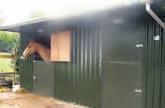
Near Stratford-upon-Avon
Lovely self-catering cottage in peaceful location: large garden.

Sleeps 2. Perfect for famous gardens, NT properties & Cotswolds.
Tel: 01789 740360 www.romanacres.com
NORTH DEVON NEAR CLOVELLY. 3 delightful cottages situated in 12 acres of idyllic countryside. Sleeps 2-4. 1 Wheelchair friendly. Brochure: 01237 431324 www.foxwoodlodge.co.uk foxwoodlodge@outlook.com
BED & BREAKFAST
Tel: 07971 251261
GARDEN PLANTS/ACCESSORIES
MERRYFIELDPOTTERY
BIRDFEEDERPODSCANDLEPOTS
ADVERTISE HERE FROM
GARDEN SERVICES
Gloucestershire Quality Bungalow B&B Ensuites, rural, large garden, paddocks, sheep and fruit. Ideal Cotswolds, Malvern’s, Forest of Dean, cycle storage, ample parking, Wi-Fi £40 p.p.p.n.
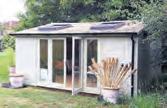
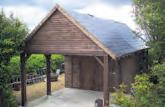


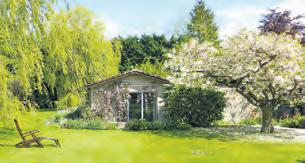
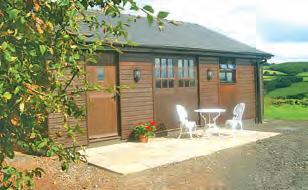
01452 840224
CARDS, PRINTS & GIFTS
A range of over 200 greetings cards and prints from the flower paintings of ANNE COTTERILL

We sell to both individuals and trade. No order too small. Contact us for your free catalogue.
Mill House Fine Art Publishing, Bellflower Gallery, Market Place, Colyton, Devon EX24 6JS
Tel. 01297 553100 info@millhousefineart.com www.millhousefineart.com
01803314236
www.merryfieldpottery.com

THE GARDENER’S BLACKSMITH
jonne@jonne.co.uk 07770 720 373
Artist blacksmith based near Axminster designing and manufacturing garden plant supports, structures, garden art and fine art bronzes. Commissions welcomed.

www.thegardenersblacksmith.co.uk
POLYTUNNELS

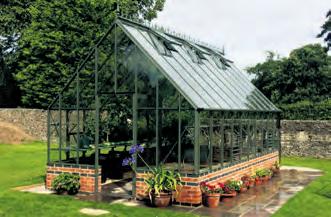
SEED SUPPLIERS
SPECIALIST GARDEN PRODUCTS


SPECIALIST NURSERIES
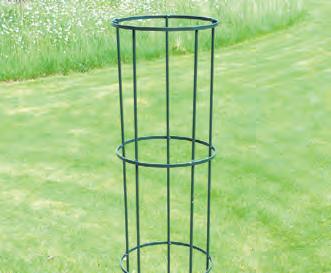
DON’T JUST TAKE OUR WORD...
“Picked up a copy of your September issue yesterday. I have to say that it was easily the best free magazine of its type I have ever read. Congratulations on such a great publication.”

Our popular gardening themed crossword is compiled by Saranda which over the past year has become enormously popular with readers. The winning entry to be drawn by us will receive £100 of RHS gift tokens. Completed entries should be sent to Mount House, Halse, Taunton, Somerset TA4 3AD. Closing date is 30th September. The winner of our August issue crossword was Martin Healy from Minehead.
“I had the opportunity of reading it from cover to cover. It’s a real gem and I look forward to every issue. Thanks to all your team for their input and what must be one of the best magazines around.”
ACROSS
1. A cosmopolitan genus of plants including love-lies-bleeding (10)
7. English naturalist, traveller and gardener (1570-1638) (10)
12. An unidentified representative of a country’s armed forces killed in war (7,7)
13. Timorous or fearful (6)
14. A tall, thin person or support for climbing plants (8)
15. Certain types of fruit suitable for consuming raw (6,6)
16. A plant that has its seeds in a pod (6)
17. Popular food for birds produced from the opium poppy (7)
19. Botanically, having the form of a thong or strap (6)
20. Splashed with liquid mud? (10)
21. Bitter orange or Seville orange? (8)
24. Alpine French city awarded the ‘golden flower’ accolade in 2015 (6)
26. Piece of fine mesh worn on the head? (7)
27. Treeless, grassy plains of South America (6)
28. Malaysian tree with pale, lightweight timber (8)



29. Lowland peat bog in Cumbria where a battle occurred in 1542 (6,4)
32. The hard, aromatic seed of a tropical tree (6)
34. Flowers often called St John’s Wort (7)
36. Composition for an instrumental soloist (6)
37. Scientific name for stonecrop or orpine family of plants (12)
38. A hardwood tree in the genus Carpinus (8)
39. Severe or harsh (6)
40. Advice to someone with dangerous water supply! (5,4,5)
41. Aquatic plants whose pungent leaves are used in salads (10)
42. Fossil reptiles of a Permian and Triassic order (10) DOWN
2. Californian tree, Pinus radiata (8,4)
3. Family of over two thousand flowering plants including buttercups (13)

4. National park of southern England (3,6)
5. Overly eager speed! (5)
6. Milestone celebrating 25 years of marriage (6,7)
7. Plant of daisy family with prickly stem (7)
8. Biblical character whose beard may refer to certain plants? (5)
9. Produced or occurring outside a flower (11)
10. Any plant that grows along the ground or up walls and trees (7)

11. French for hazelnut and also a climbing rose (8)
17. Prostrate aquatic plant of the genus Apium (9)
18. Genus of plants commonly called foxgloves (9)
21. Official document that details your account activity (4,9)

22. Alternative name for foxglove (4,4,5)
23. Domesticated and clean within the home (5,7)
25. Dye derived from the wood of the smoke tree (5,6)
30. Country whose trees include the eucalyptus (9)
31. Misspelling of a genus of about 20 species in the cabbage family (8)
33. Exceptionally large and heavy (7)
35. Epsom’s classic trees! (3,4)
38. A lane in a formal garden or park (5)
39. Dutch town with a large English landscape garden laid out around a castle (5)
When King John signed the Magna Carta in 1215 there were many witnesses, one of which survives to this day.
No, it’s not David Attenborough, it’s the Ankerwycke Yew!
The yew is an ancient species. Yew, like fossils, have been found in rocks over 200 million years old and clever palaeontologists have been able to carbon date fossils of Taxus baccata, the yew as we know it now, to 15 million years ago. We have yews that are believed to be thousands of years old growing in this country.
Oaks, newer kids on the block, appear around 40 million years ago, with, unlike the yew, a huge number of variations, possibly as they had their rise in a period of global cooling with all kinds of new habitats appearing for colonisation as sea waters receded. Shame, we seem to be in the process of giving a lot of them back.
Our main native oak, Quercus robur, will live for 1,000 years given the right circumstances.
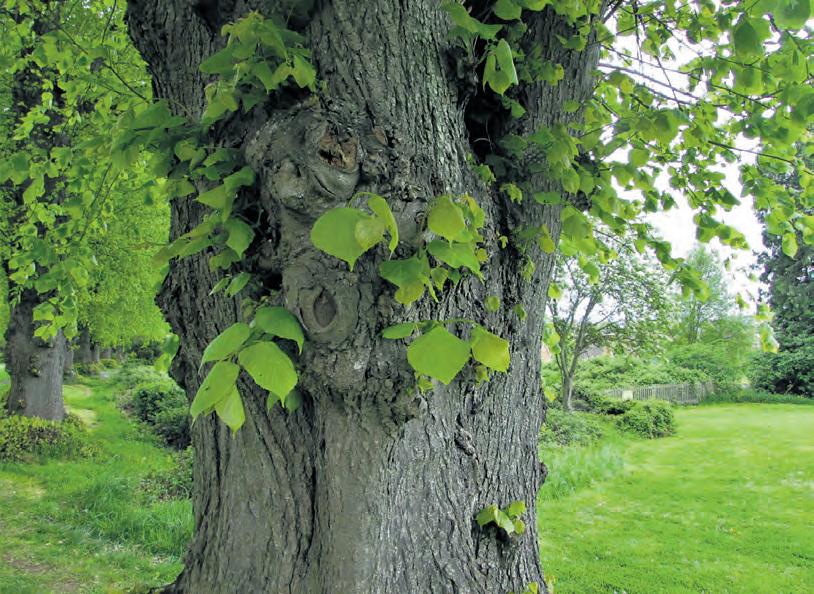
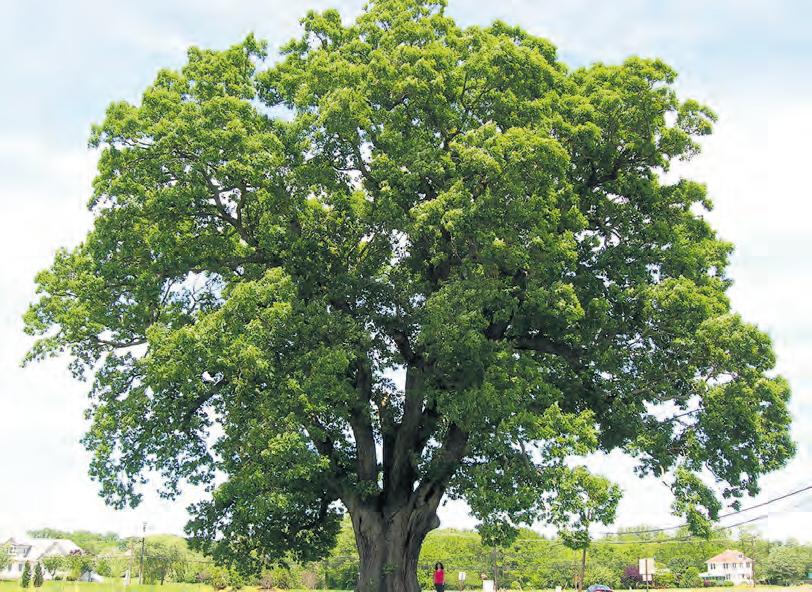
The ancestors of our native lime tree, Tilia cordata, go back 70 million years. This is a fine, potentially magnificent tree that does not drop huge amounts of aphid c**p onto the paintwork of your beloved BMW. People will be surprised to know that lime trees are known to live for 1,200 years.
When you have trees with life spans like these, with a hop skip and a jump, you are back in the Bronze Age. Aurochs are thundering by, chased by packs of wolves, wild boar root around in the undergrowth and beavers dam the rivers. The countryside teems with wildlife. Even then, these trees which could achieve great age were special to various forms of life, particularly insects, which had evolved with them for millennia.
You could tell some of these insects which require a particularly shaped hollow or the right decayed matter in the base of a hollow that they over-specialised and are the architects of their own downfall.
However, just a tree generation ago, there would have been many more of these ancient giants in the landscape than there are now. Ancient trees with hollows and dead limbs in abundance, Safetycus fanaticus and Chainsawus armagedonus not yet having evolved. Even in places like Plymouth, the ancient trees, often revered and with little useable timber for long bows, shipbuilding or sculpting, were left in peace. Consequently, our specialist little insect friends had enough places to live and breed and survive.
If you visit the Tisbury Yew in, well, Tisbury, you will see that its mighty hollow trunk has been filled with concrete which has been painted sort of yew wood brown. A wellmeaning attempt to make the tree strong again, but not very helpful if your habitat is the decayed material at the bottom of the hollow.
The 1970s may be the decade that fashion forgot, but it is also the decade that arboriculture wants to forget. Special tools for cleaning out the decayed wood in
Publisher & Editor: Alan Lewis alan@countrygardener.co.uk Tel: 01823 431767
timeoff@countrygardener.co.uk
01278 786139
The Tisbury Yew - Standing quietly in a water-meadow on the flood plain of the River Thames is a very special ancient tree.
This evergreen giant is a survivor – a lone tree that has borne witness to countless generations. It is the oldest known tree on National Trust land. This is the Ankerwycke Yew. Beneath a veil of dark, shaggy needles; is a colossal, colourful trunk.
The girth exceeds nine metres meters (over 29 ½ feet!) While its exact age is unknown, estimates have placed it between 2,000 and 2,500 years old. But this iconic yew is significant not just because of its age.
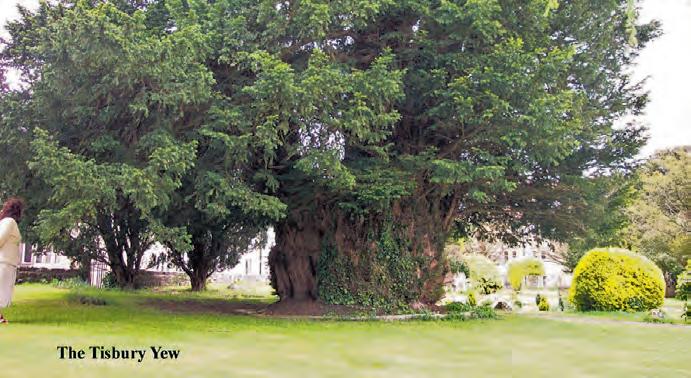
Many believe it is the exact location where King John signed the Magna Carta in 1215. The tree would be then the last surviving witness to this historic event. Surrounded by myth and legend, it is also widely believed that beneath the boughs of this tree, King Henry VIII began his first liaisons with his future ill-fated wife Anne Boleyn in the 1530s.
Yew trees have held spiritual significance through the ages. They were admired and considered lucky by the Celts who made shields and weapons from yew wood –believing the longevity and strength of the yew would be transferred to the warrior.
cavities, buckets of bitumastic paint, expanding cavity filling foam, drainpipes for water pockets, it was a massacre for our overly specialist little friends.
We don’t do those things now. Our little friends’ problem now is a lack of suitable veteran trees to live in.
Despite all the campaigning, we are still losing them, and they are hard to replace. Young insects, like young people, move out of their parent’s homes – where are they going to go?
How far can they travel and in what direction to find a place of their own?
MIND OUT FOR THAT TRAIN! Too late.
Mark Hinsley, of Mark Hinsley Arboricultural Consultants Ltd, offering tree consultancy services. www.treeadvice.info
Cath Pettyfer - Devon cath.pettyfer@countrygardener.co.uk
Tel: 01837 82660
Corina Reay - Cotswolds & Dorset corina@countrygardener.co.uk
Tel: 01823 410098
Classifieds classified@countrygardener.co.uk
Design & Production
Aidan Gill aidan@countrygardener.co.uk
Gemma Stringer gemma@countrygardener.co.uk
Distribution & Stockists
Pat Eade distribution@countrygardener.co.uk
Accounts and subscriptions
Heather Rose heather@countrygardener.co.uk
Mark Hinsley looks worryingly at the dwindling number of historic trees which mark our landscape and which in turn affect the cycle of insect life
